Les Anciens, c’est à dire nos ancêtres gréco-germano-gallo-slavo-illyro-romains, étaient fort conscients des causes héréditaires de la décadence quoiqu’ils attribuassent à cette notion des noms fort variés. La notion de décadence, ainsi que sa réalité existent depuis toujours alors que sa dénomination actuelle ne s’implante solidement dans la langue française qu’au XVIIIème siècle, dans les écrits de Montesquieu.i Plus tard, vers la fin du XIXème siècle, les poètes dits « décadents », en France, étaient même bien vus et bien lus dans les milieux littéraires traditionalistes, ceux que l’on désigne aujourd’hui, de façon commode, comme les milieux « d’extrême droite ». Par la suite, ces poètes et écrivains décadents du XIXème siècle nous ont beaucoup marqué, malgré leur mœurs souvent débridées, métissées, alcoolisées et narcotisées, c’est-à-dire malgré leur train de vie décadent.ii
En Allemagne, vers la fin du XIXème siècle et au début du XXème siècle, bien que moins régulièrement qu’en France, le terme « Dekadenz » était également en usage dans la prose des écrivains réactionnaires et conservateurs qu’effrayaient le climat de déchéance morale et la corruption capitaliste dans la vie culturelle et politique de leur pays. Il faut souligner néanmoins que le mot allemand « Dekadenz », qui est de provenance française, a une signification différente dans la langue allemande, langue qui préfère utiliser son propre trésor lexical et dont, par conséquent, les signifiants correspondent souvent à un autre signification. Le bon équivalent conceptuel, en allemand, du mot français décadence serait le très unique terme allemand « Entartung », terme qui se traduit en français et en anglais par le lourd terme d’essence biologique de « dégénérescence » et « degeneracy », termes qui ne correspondent pas tout à fait à la notion originale d’ « Entartung » en langue allemande. Le terme allemand « Entartung », dont l’étymologie et le sens furent à l’origine neutres, désigne le procès de dé-naturalisation, ce qui n’a pas forcément partie liée à la dégénérescence biologique. Ce mot allemand, vu son usage fréquent sous le Troisième Reich devait subir, suite à la fin de la Deuxième Guerre mondiale et suite à la propagande alliée anti-allemande, un glissement sémantique très négatif de sorte qu’on ne l’utilise plus dans le monde de la culture et de la politique de l’Allemagne contemporaine.iii
En Europe orientale et communiste, durant la Guerre froide, le terme de décadence n’a presque jamais été utilisé d’une façon positive. À sa place, les commissaires communistes fustigeaient les mœurs capitalistes des Occidentaux en utilisant le terme révolutionnaire et passe-partout, notamment le terme devenu péjoratif (dans le lexique communiste) de « bourgeois ». En résumé, on peut conclure que les usagers les plus réguliers du terme « décadence » ainsi que ses plus farouches critiques sont les écrivains classé à droite ou à l’extrême droite.
On doit ici soulever trois questions essentielles. Quand la décadence se manifeste-t-elle, quelles sont ses origines et comment se termine-t-elle ? Une foule d’écrivains prémodernes et postmodernes, de J.B. Bossuet à Emile Cioran, chacun à sa façon et chacun en recourant à son propre langage, nous ont fourni des récits apocalyptiques sur la décadence qui nous conduit à son tour vers la fin du monde européen. Or force est de constater que l’Europe se porte toujours bel et bien malgré plusieurs décadences que elle a déjà subies à partir de la décadence de l’ancienne Rome jusqu’à celle de nos jours. À moins qu’on ne soit, cette fois-ci, voués – compte tenu du remplacement des peuples européens par des masses de peuplades non-européens – non plus à la fin d’UNE décadence mais à LA décadence finale de notre monde européen tout court.
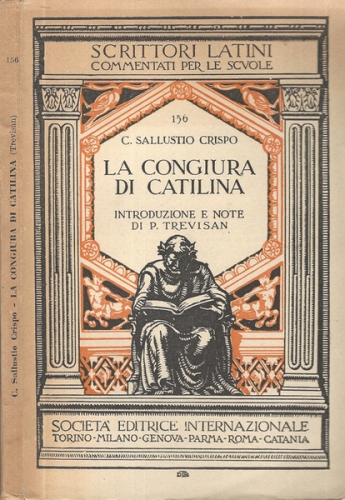 Avant que l’on commence à se lamenter sur les décadences décrites par nos ancêtres romains et jusque par nos auteurs contemporains, et quelle que soit l’appellation qui leur fut attribuée par les critiques modernes, « nationalistes », « identitaires », « traditionalistes de la droite alternative, » « de la droite extrême » et j’en passe, il est essentiel de mentionner deux écrivains modernes qui signalèrent l’arrivée de la décadence bien que leur approche respective du contenu et des causes de la décadence fut très divergente. Ce sont l’Allemand Oswald Spengler avec son Déclin de l’Occident, écrit au début du XXème siècle, et le Français Arthur de Gobineau avec son gros ouvrage Essai sur l'inégalité des races humaines, écrit soixante ans plut tôt. Tous deux étaient des écrivains d’une grande culture, tous deux partageaient la même vision apocalyptique de l’Europe à venir, tous deux peuvent être appelés des pessimistes culturels avec un sens du tragique fort raffiné. Or pour le premier de ces auteurs, Spengler, la décadence est le résultat du vieillissement biologique naturel de chaque peuple sur terre, vieillissement qui l’amène à un moment historique à sa mort inévitable. Pour le second, Gobineau, la décadence est due à l’affaiblissement de la conscience raciale qui fait qu’un peuple adopte le faux altruisme tout en ouvrant les portes de la cité aux anciens ennemis, c’est-à-dire aux Autres d’une d’autre race, ce qui le conduit peu à peu à s’adonner au métissage et finalement à accepter sa propre mort. À l’instar de Gobineau, des observations à peu près similaires seront faites par des savants allemands entre les deux guerres. On doit pourtant faire ici une nette distinction entre les causes et les effets de la décadence. Le tedium vitae (fatigue de vivre), la corruption des mœurs, la débauche, l’avarice, ne sont que les effets de la disparation de la conscience raciale et non sa cause. Le mélange des races et le métissage, des termes qui sont mal vus aujourd’hui par le Système et ses serviteurs, étaient désignés par Gobineau par le terme de « dégénérescence ». Selon lui, celle-ci fonctionne dorénavant, comme une machine à broyer le patrimoine génétique des peuples européens. Voici une courte citation de son livre :
Avant que l’on commence à se lamenter sur les décadences décrites par nos ancêtres romains et jusque par nos auteurs contemporains, et quelle que soit l’appellation qui leur fut attribuée par les critiques modernes, « nationalistes », « identitaires », « traditionalistes de la droite alternative, » « de la droite extrême » et j’en passe, il est essentiel de mentionner deux écrivains modernes qui signalèrent l’arrivée de la décadence bien que leur approche respective du contenu et des causes de la décadence fut très divergente. Ce sont l’Allemand Oswald Spengler avec son Déclin de l’Occident, écrit au début du XXème siècle, et le Français Arthur de Gobineau avec son gros ouvrage Essai sur l'inégalité des races humaines, écrit soixante ans plut tôt. Tous deux étaient des écrivains d’une grande culture, tous deux partageaient la même vision apocalyptique de l’Europe à venir, tous deux peuvent être appelés des pessimistes culturels avec un sens du tragique fort raffiné. Or pour le premier de ces auteurs, Spengler, la décadence est le résultat du vieillissement biologique naturel de chaque peuple sur terre, vieillissement qui l’amène à un moment historique à sa mort inévitable. Pour le second, Gobineau, la décadence est due à l’affaiblissement de la conscience raciale qui fait qu’un peuple adopte le faux altruisme tout en ouvrant les portes de la cité aux anciens ennemis, c’est-à-dire aux Autres d’une d’autre race, ce qui le conduit peu à peu à s’adonner au métissage et finalement à accepter sa propre mort. À l’instar de Gobineau, des observations à peu près similaires seront faites par des savants allemands entre les deux guerres. On doit pourtant faire ici une nette distinction entre les causes et les effets de la décadence. Le tedium vitae (fatigue de vivre), la corruption des mœurs, la débauche, l’avarice, ne sont que les effets de la disparation de la conscience raciale et non sa cause. Le mélange des races et le métissage, des termes qui sont mal vus aujourd’hui par le Système et ses serviteurs, étaient désignés par Gobineau par le terme de « dégénérescence ». Selon lui, celle-ci fonctionne dorénavant, comme une machine à broyer le patrimoine génétique des peuples européens. Voici une courte citation de son livre :
Je pense donc que le mot dégénéré, s’appliquant à un peuple, doit signifier et signifie que ce peuple n’a plus la valeur intrinsèque qu’autrefois il possédait, parce qu’il n’a plus dans ses veines le même sang, dont des alliages successifs ont graduellement modifié la valeur ; autrement dit, qu’avec le même nom, il n’a pas conservé la même race que ses fondateurs ; enfin, que l’homme de la décadence, celui qu’on appelle l’homme dégénéré, est un produit différent, au point de vue ethnique, du héros des grandes époques.iv
Et plus tard, Gobineau nous résume peut-être en une seule phrase l’intégralité de son œuvre : « Pour tout dire et sans rien outrer, presque tout ce que la Rome impériale connut de bien sortit d'une source germanique ».v
Ce qui saute aux yeux, c’est que soixante ans plus tard, c’est-à-dire au début du XXème siècle, l’Allemand Oswald Spengler, connu comme grand théoricien de la décadence, ne cite nulle part dans son œuvre le nom d’Arthur de Gobineau, malgré de nombreuses citations sur la décadence empruntées à d’autres auteurs français.
* *
Nous allons poursuivre nos propos théoriques sur les causes du déclin de la conscience raciale et qui à son tour donne lieu au métissage en tant que le nouveau mode de vie. Avant cela, il nous faut nous pencher sur la notion de décadence chez les écrivains romains Salluste et Juvénal et voir quel fut d’après eux le contexte social menant à la décadence dans l’ancienne Rome.
 L’écrivain Salluste est important à plusieurs titres. Primo, il fut le contemporain de la conjuration de Catilina, un noble romain ambitieux qui avec nombre de ses consorts de la noblesse décadente de Rome faillit renverser la république romaine et imposer la dictature. Salluste fut partisan de Jules César qui était devenu le dictateur auto-proclamé de Rome suite aux interminables guerres civiles qui avaient appauvri le fonds génétique de nombreux patriciens romains à Rome.
L’écrivain Salluste est important à plusieurs titres. Primo, il fut le contemporain de la conjuration de Catilina, un noble romain ambitieux qui avec nombre de ses consorts de la noblesse décadente de Rome faillit renverser la république romaine et imposer la dictature. Salluste fut partisan de Jules César qui était devenu le dictateur auto-proclamé de Rome suite aux interminables guerres civiles qui avaient appauvri le fonds génétique de nombreux patriciens romains à Rome.
Par ailleurs Salluste nous laisse des pages précieuses sur une notion du politique fort importante qu’il appelle « metus hostilis » ou « crainte de l’ennemi », notion qui constituait chez les Romains, au cours des guerres contre les Gaulois et Carthaginois au siècle précèdent, la base principale de leur race, de leur vertu, de leur virilité, avec une solide conscience de leur lignage ancestral. Or après s’être débarrassé militairement de « metus Punicus » et de « metus Gallicus », à savoir après avoir écarté tout danger d’invasion extérieure, les Romains, au milieu du IIème siècle avant notre ère, ont vite oublié le pouvoir unificateur et communautaire inspiré par « metus hostilis » ou la « crainte de l’Autre » ce qui s’est vite traduit par la perte de leur mémoire collective et par un goût prononcé pour le métissage avec l’Autre des races non-européennes.
Voici une courte citation de Salluste dans son ouvrage, Catilina, Chapitre 10.
Ces mêmes hommes qui avaient aisément supporté les fatigues, les dangers, les incertitudes, les difficultés, sentirent le poids et la fatigue du repos et de la richesse… L'avidité ruina la bonne foi, la probité, toutes les vertus qu'on désapprit pour les remplacer par l'orgueil, la cruauté, l'impiété, la vénalité.vi
La crainte de l’ennemi, la crainte de l’Autre, notion utilisée par Salluste, fut aux XIXème et XXème siècles beaucoup discutée par les historiens, politologues et sociologues européens. Cette notion, lancée par Salluste, peut nous aider aujourd’hui à saisir le mental des migrants non-européens qui s’amassent en Europe ainsi que le mental de nos politiciens qui les y invitent. Certes, la crainte de l’Autre peut être le facteur fortifiant de l’identité raciale chez les Européens de souche. On en est témoin aujourd’hui en observant la renaissance de différents groupes blancs et identitaires en Europe. En revanche, à un moment donné, le metus hostiles, à savoir la crainte des Autres, risque de se transformer en son contraire, à savoir l’amor hostiles, ou l’amour de l’ennemi qui détruit l’identité raciale et culturelle d’un peuple. Ainsi les Occidentaux de souche aujourd’hui risquent-ils de devenir peu à peu victimes du nouveau paysage multiracial où ils sont nés et où ils vivent. Pire, peu à peu ils commencent à s’habituer à la nouvelle composition raciale et finissent même par l’intérioriser comme un fait naturel. Ces mêmes Européens, seulement quelques décennies auparavant, auraient considéré l’idée d’un pareil changement racial et leur altruisme débridé comme surréel et morbide, digne d’être combattu par tous les moyens.
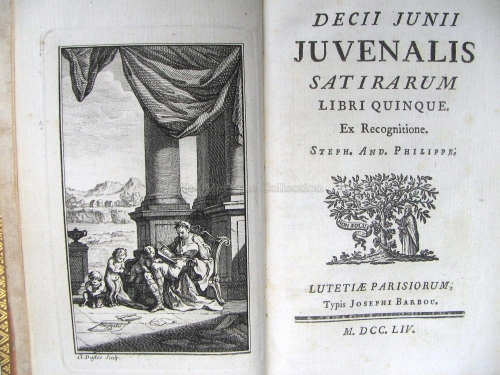
Nul doute que la crainte de l’Autre, qu’elle soit réelle ou factice, resserre les rangs d’un peuple, tout en fortifiant son homogénéité raciale et son identité culturelle. En revanche, il y a un effet négatif de la crainte des autres que l’on pouvait observer dans la Rome impériale et qu’on lit dans les écrits de Juvénal. Le sommet de l’amour des autres, ( l’ amor hostiles) ne se verra que vers la fin du XXème siècle en Europe multiculturelle. Suite à l’opulence matérielle et à la dictature du bien-être, accompagnées par la croyance à la fin de l’histoire véhiculé par les dogmes égalitaristes, on commence en Europe, peu à peu, à s’adapter aux mœurs et aux habitudes des Autres. Autrefois c’étaient Phéniciens, Juifs, Berbères, Numides. Parthes et Maghrébins et autres, combattus à l’époque romaine comme des ennemis héréditaires. Aujourd’hui, face aux nouveaux migrants non-européens l’ancienne peur de l’Autre se manifeste chez les Blancs européens dans le mimétisme de l’altérité négative qui aboutit en règle générale à l’apprentissage du « déni de soi ». Ce déni de soi, on l’observe aujourd’hui dans la classe politique européenne et américaine à la recherche d’un ersatz pour son identité raciale blanche qui est aujourd’hui mal vue. A titre d’exemple cette nouvelle identité négative qu’on observe chez les gouvernants occidentaux modernes se manifeste par un dédoublement imitatif des mœurs des immigrés afro-asiatiques. On est également témoin de l’apprentissage de l’identité négative chez beaucoup de jeunes Blancs en train de mimer différents cultes non-européens. De plus, le renversement de la notion de « metus hostiles » en « amor hostiles » par les gouvernants européens actuels aboutit fatalement à la culture de la pénitence politique. Cette manie nationale-masochiste est surtout visible chez les actuels dirigeants allemands qui se lancent dans de grandes embrassades névrotisées avec des ressortissants afro-asiatiques et musulmans contre lesquels ils avaient mené des guerres meurtrières du VIIIe siècle dans l’Ouest européen et jusqu’au XVIIIe siècle dans l’Est européen.
L’engouement pour l’Autre extra-européen – dont l’image est embellie par les médias et cinémas contemporains – était déjà répandu chez les patriciens romains décadents au Ièr siècle et fut décrit par le satiriste Juvénal. Dans sa IIIème satire, intitulée Les Embarras de Rome (Urbis incommoda), Juvénal décrit la Rome multiculturelle et multiraciale où pour un esprit raffiné comme le sien il était impossible de vivre...
Dans ces flots d’étrangers et pourtant comme rien
Depuis longtemps déjà l’Oronte syrien
Coule au Tibre, et transmet à Rome ses coutumes,
Sa langue, ses chanteurs aux bizarres costumes...vii
Juvénal se plaint également des migrants juifs dans ses satires, ce qui lui a valu d’être taxé d’antisémitisme par quelques auteurs contemporains.
Maintenant la forêt et le temple et la source
Sont loués à des Juifs, qui, pour toute ressource,
Ont leur manne d’osier et leur foin de rebut.
Là, chaque arbre est contraint de payer son tribut;
On a chassé la muse, ô Rome abâtardie
Et l’auguste forêt tout entière mendie viii
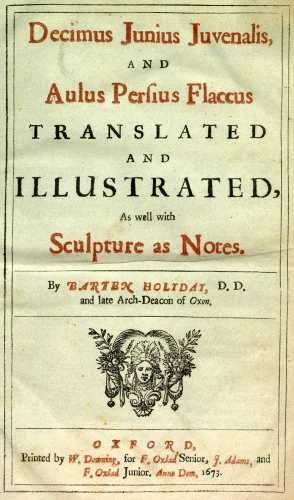 Les lignes de Juvénal sont écrites en hexamètres dactyliques ce qui veut dire en gros un usage d’échanges rythmiques entre syllabes brèves ou longues qui fournissent à chacune de ses satires une tonalité dramatique et théâtrale qui était très à la mode chez les Anciens y compris chez Homère dans ses épopées. À l’hexamètre latin, le traducteur français a substitué les mètres syllabiques rimés qui ont fort bien capturé le sarcasme désabusé de l’original de Juvénal. On est tenté de qualifier Juvénal de Louis Ferdinand Céline de l‘Antiquité. Dans sa fameuse VIème satire, qui s’intitule Les Femmes, Juvénal décrit la prolifération de charlatans venus à Rome d’Asie et d’Orient et qui introduisent dans les mœurs romaines la mode de la zoophilie et de la pédophilie et d’autres vices. Le langage de Juvénal décrivant les perversions sexuelles importées à Rome par des nouveaux venues asiatiques et africains ferait même honte aux producteurs d’Hollywood aujourd’hui. Voici quelques-uns de ses vers traduits en français, de manière soignés car destinés aujourd’hui au grand public :
Les lignes de Juvénal sont écrites en hexamètres dactyliques ce qui veut dire en gros un usage d’échanges rythmiques entre syllabes brèves ou longues qui fournissent à chacune de ses satires une tonalité dramatique et théâtrale qui était très à la mode chez les Anciens y compris chez Homère dans ses épopées. À l’hexamètre latin, le traducteur français a substitué les mètres syllabiques rimés qui ont fort bien capturé le sarcasme désabusé de l’original de Juvénal. On est tenté de qualifier Juvénal de Louis Ferdinand Céline de l‘Antiquité. Dans sa fameuse VIème satire, qui s’intitule Les Femmes, Juvénal décrit la prolifération de charlatans venus à Rome d’Asie et d’Orient et qui introduisent dans les mœurs romaines la mode de la zoophilie et de la pédophilie et d’autres vices. Le langage de Juvénal décrivant les perversions sexuelles importées à Rome par des nouveaux venues asiatiques et africains ferait même honte aux producteurs d’Hollywood aujourd’hui. Voici quelques-uns de ses vers traduits en français, de manière soignés car destinés aujourd’hui au grand public :
Car, intrépide enfin, si ton épouse tendre
Voulait sentir son flanc s’élargir et se tendre
Sous le fruit tressaillant d’un adultère amour,
Peut-être un Africain serait ton fils un jour ix
Les Romains utilisaient le mot « Aethiopis », Ethiopiens pour désigner les Noirs d’Afrique.
Qui interprète l’interprète ?
L’interprétation de chaque ouvrage par n’importe quel auteur, sur n’importe quel sujet social et à n’importe quelle époque, y compris les vers de l’écrivain latin Juvénal, se fera en fonction des idées politiques dominantes à savoir du Zeitgeist régnant. Or qui va contrôler l’interprète aujourd’hui si on est obligé de suivre les oukases pédagogiques de ses chefs mis en place après la fin de la Deuxième Guerre mondiale ? À cet effet on peut citer Juvénal et les fameux vers de sa VIème satire : « Quis custodet ipsos custodes » à savoir qui va garder les gardiens, c’est à dire qui va contrôler nos architectes de la pensée unique qui sévissent dans les universités et dans les médias ?
A peu près le même principe de censure et d’autocensure règne aujourd’hui au sujet de l’étude et la recherche sur les différentes races. Aujourd’hui, vu le dogme libéralo-communiste du progrès et la conviction que les races ne sont qu’une construction sociale et non un fait biologique et en raison du climat d’auto-censure qui sévit dans la haute éducation et dans les médias, il n’est pas surprenant que de savants qui analysent les différences entre races humaines soient souvent accusés d’utiliser des prétendus « stéréotypes ethniques ». Or le vocable « stéréotype » est devenu aujourd’hui un mot d’ordre chez les bien-pensants et chez les hygiénistes de la parole en Europe. La même procédure d’hygiénisme lexical a lieu lorsqu’un biologiste tente d’expliquer le rôle des différents génomes au sein des différentes races. Un savant généticien, s’il s’aventure à démystifier les idées égalitaires sur la race et l’hérédité risque d’être démonisé comme raciste, fasciste, xénophobe ou suprémaciste blanc. La nouvelle langue de bois utilisée par les médias contre les mal-pensants se propage dans toutes les chancelleries et toutes les universités européennes.
Certes, les idées, en l’occurrence de mauvaises idées, mènent le monde, et non l’inverse. Dans la même veine, les idées dominantes qui sont à la base du Système d’aujourd’hui décident de l’interprétation des découvertes dans les sciences biologiques et non l’inverse. Nous avons récemment vu la chasse aux sorcières dont fut victime le Prix Nobel James Watson, codécouvreur de la structure de l'ADN et du décryptage du génome humain. Il a été attaqué par les grand médias pour des propos prétendument racistes émis il y a une dizaine d’année à propos des Africains. Je le cite : « Même si j'aimerais croire que tous les êtres humains sont dotés d'une intelligence égale, ceux qui ont affaire à des employés noirs ne pensent pas la même chose»x. Ce que Watson a dit est partagé par des milliers de biologistes et généticiens mais pour des raisons que nous avons déjà mentionnées, ils se taisent.
Nos Anciens possédaient un sens très aigu de leur héritage et de leur race qu’ils appelaient genus. Il existe une montagne d’ouvrages qui traitent de la forte conscience de la parenté commune et du lignage commun chez les Anciens. Nous n’allons pas citer tous les innombrables auteurs, notamment les savants allemands de la première moitié du XXème siècle qui ont écrit un tas de livres sur la dégénérescence raciale des Romains et d’autres peuples européens et dont les ouvrages sont non seulement mal vus mais également mal connus par le grand public d’aujourd’hui. Il est à noter qu’avant la Deuxième Guerre mondiale et même un peu plus tard, les savants et les historiens d’Europe et d’Amérique se penchaient sur le facteur racial beaucoup plus souvent et plus librement qu’aujourd’hui.
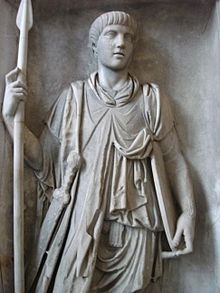 Il va de soi que les anciens Romains ignoraient le lois mendéliennes de l’hérédité ainsi que les complexités du fonctionnement de l’ADN, mais ils savaient fort bien comment distinguer un barbare venu d’Europe du nord d’un barbare venu d’Afrique. Certains esclaves étaient fort prisés, tels les Germains qui servaient même de garde de corps auprès des empereurs romains. En revanche, certains esclaves venues d’Asie mineure et d’Afrique, étaient mal vus et faisaient l’objet de blagues et de dérisions populaires.
Il va de soi que les anciens Romains ignoraient le lois mendéliennes de l’hérédité ainsi que les complexités du fonctionnement de l’ADN, mais ils savaient fort bien comment distinguer un barbare venu d’Europe du nord d’un barbare venu d’Afrique. Certains esclaves étaient fort prisés, tels les Germains qui servaient même de garde de corps auprès des empereurs romains. En revanche, certains esclaves venues d’Asie mineure et d’Afrique, étaient mal vus et faisaient l’objet de blagues et de dérisions populaires.
Voici une brève citation de l’historien américain Tenney Frank, tirée de son livre Race Mixture in the Roman Empire ( Mélange des races dans l’Empire de Rome), qui illustre bien ce que les Romains pensaient d’eux-mêmes et des autres. Au début du XXème siècle Frank était souvent cité par les latinistes et il était considéré comme une autorité au sujet de la composition ethnique de l’ancienne Rome. Dans son essai, il opère une classification par races des habitants de l’ancienne Rome suite à ses recherches sur les inscriptions sépulcrales effectuées pendant son séjour à Rome. Voici une petite traduction en français de l’un de ces passages :
.…de loin le plus grand nombre d’esclaves venait de l'Orient, notamment de la Syrie et des provinces de l'Asie Mineure, avec certains venant d’Égypte et d’Afrique (qui, en raison de la classification raciale peuvent être considères comme venant de l'Orient). Certains venaient d’Espagne et de Gaule, mais une proportion considérable d'entre eux étaient originaires de l'Est. Très peu d’esclaves furent recensés dans les provinces alpines et danubiennes, tandis que les Allemands apparaissent rarement, sauf parmi les gardes du corps impériaux. (L’auteur) Bang remarque que les Européens étaient de plus grand service à l'empire en tant que soldats et moins en tant que domestiques.xi
Et plus tard il ajoute :
Mais ce qui resta à l’arrière-plan et régit constamment sur toutes ces causes de la désintégration de Rome fut après tout le fait que les gens qui avaient construit Rome ont cédé leur place à un race différente.xii
Les anciens Romains avaient une idée claire des différents tribus et peuples venus d’Orient à Rome. Comme l’écrit un autre auteur, « Les esclaves d’Asie mineur et les affranchis cariens, mysiens, phrygiens et cappadociens, à savoir les Orientaux, étaient, par rapport aux esclaves d'autres provinces, particulièrement méprisés dans la conscience romaine. Ces derniers sont même devenus proverbiaux à cause de leur méchanceté. » xiii
En conclusion, on peut dire qu’une bonne conscience raciale ne signifie pas seulement une bonne connaissance des théories raciales ou pire encore la diffusion des insultes contre les non-Européens. Avoir la conscience raciale signifie tout d’abord avoir une bonne mémoire de la lignée commune et une bonne mémoire du destin commun. Cela a été le cas avec les tribus européennes et les peuples européens depuis la nuit des temps. Une fois l’héritage du peuple, y compris son hérédité, oublié ou compromis, la société commence à se désagréger comme on l’a vu à Rome et comme on le voit chaque jour en Europe aujourd’hui. « Les premiers Romains tenaient à leur lignée avec beaucoup de respect et appliquaient un système de connubium selon lequel ils ne pouvaient se marier qu’au sein de certains stocks approuvés »xiv. Inutile de répéter comment on devrait appliquer le devoir de connubium en Europe parmi les jeunes Européens aujourd’hui. Voilà un exemple qui dépasse le cadre de notre discussion. Suite à la propagande hollywoodienne de longue haleine il est devenu à la mode chez de jeunes Blanches et Blancs de se lier avec un Noir ou un métis. Il s’agit rarement d’une question d’amour réciproque mais plutôt d’une mode provenant du renversement des valeurs traditionnelles.
Il est inutile de critiquer les effets du métissage sans en mentionner ses causes. De même on doit d’abord déchiffrer les causes de l’immigration non-européenne avant de critiquer ses effets. Certes, comme if fut déjà souligné la cause de la décadence réside dans l’oubli de la conscience raciale. Or celle-ci avait été soit affaiblie soit supprimée par le christianisme primitif dont les avatars séculiers se manifestent aujourd’hui dans l’idéologie de l’antifascisme et la montée de diverses sectes égalitaristes et mondialistes qui prêchent la fin de l’histoire dans une grande embrassade multiraciale et transsexuel. Critiquer les dogmes chrétiens et leur visions œcuméniques vis-à-vis des immigrés est un sujet autrement plus explosif chez nos amis chrétiens traditionalistes et surtout chez nos amis d’Amérique, le pays où la Bible joue un rôle très important. Or faute de s’en prendre aux causes délétères de l’égalitarisme chrétien on va tourner en rond avec nos propos creux sur le mal libéral ou le mal communiste. On a beau critiquer les « antifas » ou bien le grand capital ou bien les banksters suisses et leurs manœuvres mondialistes. Reste qu’aujourd’hui les plus farouches avocats de l’immigration non-européenne sont l’Église Catholique et ses cardinaux en Allemagne et en Amérique. Roger Pearson, un sociobiologiste anglais de renom l’écrit . « Se répandant d'abord parmi les esclaves et les classes inférieures de l'empire romain, le christianisme a fini par enseigner que tous les hommes étaient égaux aux yeux d'un dieu créateur universel, une idée totalement étrangère à la pensée européenne... Puisque tous les hommes et toutes les femmes étaient les "enfants de Dieu", tous étaient égaux devant leur divin Créateur ! » xv
Si l’on veut tracer et combattre les racines de la décadence et ses effets qui se manifestent dans le multiculturalisme et le métissage, il nous faut nous pencher d’une manière critique sur les enseignements du christianisme primitif. Ce que l’on observe dans l’Occident d’aujourd’hui, submergé par des populations non-européennes, est le résultat final et logique de l’idée d’égalitarisme et de globalisme prêchée par le christianisme depuis deux mille ans.
Tomislav Sunic et écrivain, ancien professeur de sciences politiques aux Etats-Unis, ancien diplomate croate. (www.tomsunic.com)
Notes:
i� Montesquieu, Considérations sur les causes de la grandeur des Romains et de leur décadence (Paris:
Librairie Ch. Delagrave : 1891), Ch. IX, p. 85-86, où il cite Bossuet; “Le sénat se remplissait de barbares ; le sang romain se mêlait ; l’amour de la patrie, par lequel Rome s’était élevée au-dessus de tous les peuples du monde, n’était pas naturel à ces citoyens venus de dehors..” http://classiques.uqac.ca/classiques/montesquieu/consider...
ii� T. Sunic, „Le bon truc; drogue et démocratie“, dans Chroniques des Temps Postmodernes ( Dublin, Paris: éd Avatar, 2014), pp 227-232. En anglais, „The Right Stuff; Drugs and Democracy“, in Postmortem Report; Cultural Examinations from Postmodernity ( London: Arktos, 2017), pp. 61-65.
iii� Voir T. Sunic, « L'art dans le IIIème Reich », Ecrits de Paris, juillet—août 2002, nr. 645, Also “Art in the Third Reich: 1933-45”, in Postmortem Report ( London: Artkos, 2017) pp. 95-110.
iv� Arthur de Gobineau, Essai sur l’inégalité des races humaines, (Paris: Éditions Pierre Belfond, 1967), Livres 1 à 4, pp. 58-59.
v� Ibid, Livres 5 à 6., p. 164.
https://ia802900.us.archive.org/27/items/EssaiSurLinegaliteDesRacesHumaines/EssaiSurLinegaliteDesRacesHumaines.pdf
vi� Salluste, Ouvres de Salluste, Conjuration de Catilina - ( Paris: C.L. F. Pancoucke, 1838), pp 17-18.
https://ia802706.us.archive.org/5/items/uvresdesalluste00pancgoog/uvresdesalluste00pancgoog.pdf
vii� Satires de Juvénal et de Perse, Satire III, traduites en vers français par M. J . Lacroix (Paris : Firmin Didot frères Libraries, 1846), p. 47.
viii� Ibid. p.43
ix� Ibid., p.165
Egalement sur le site: http://remacle.org/bloodwolf/satire/juvenal/satire3b.htm
x� “ L'homme le plus riche de Russie va rendre à James Watson sa médaille Nobel”, Le Figaro, le 10 Dec. 2014.
http://www.lefigaro.fr/international/2014/12/10/01003-20141210ARTFIG00268-l-homme-le-plus-riche-de-russie-va-rendre-a-james-watson-sa-medaille-nobel.php
xi� Tenney Frank, „Race Mixture in the Roman Empire“, The American Historical Review, Vol. XXI, Nr. 4, July 1916, p. 701.
xii� Ibid. 705
xiii� Heikki Solin, “Zur Herkunft der römischen Sklaven”
https://www.academia.edu/10087127/Zur_Herkunft_der_r%C3%B...
xiv� Roger Pearson, « Heredity in the History of Western Culture, » The Mankind Quarterly, XXXV. Nr. 3. printemps 1995, p. 233.
xv� Ibid p. 234.



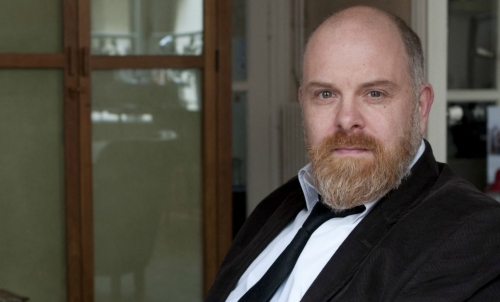
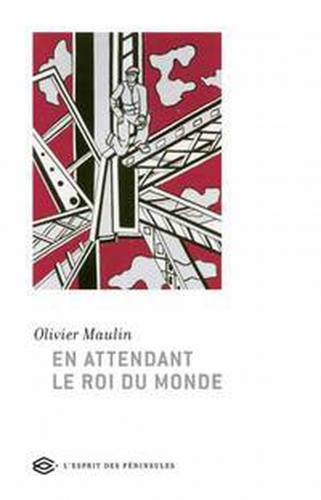
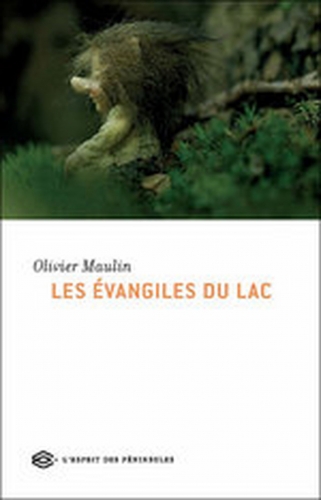 Ecologie, localisme, communautés alternatives, enracinement sont présent dans votre réflexion. Pensez vous que l’avenir appartient à un croisement entre la ZAD et la Tradition?
Ecologie, localisme, communautés alternatives, enracinement sont présent dans votre réflexion. Pensez vous que l’avenir appartient à un croisement entre la ZAD et la Tradition? Comment avez-vous découvert les milieux libres et colonies libertaires de la Belle Époque qui servent de source à l’inspiration du « Bocage à la Nage » ?
Comment avez-vous découvert les milieux libres et colonies libertaires de la Belle Époque qui servent de source à l’inspiration du « Bocage à la Nage » ?
 del.icio.us
del.icio.us
 Digg
Digg

 Antoine a donc choisi l’obscurité, décevant ainsi son épouse, qui le largue (et cesse de jouer au mécène) et, bientôt, sa fille Blandine, que viendra consoler l’attentionné Thomas. Il vivote dans un HLM de la Grand’Mare (hilarants tableautins du « vivre-ensemble ») et se contente de CDD à la médiathèque Arthur Rainbow (!), l’un des décors du roman – prétexte pour l’auteur à une description aussi comique que glaçante du dispositif d’infantilisation des masses et de leur encadrement « culturel ». Notre bibliothécaire tranche d’avec ses jeunes collègues, acquis à la culture du divertissement et conscients de leur rôle dans le dressage « citoyen » de leurs usagers. Il fera, ô surprise, l’objet d’une dénonciation en règle pour un article littéraire de sa revue consacré à un écrivain qui, dans un français parfait, ose évoquer l’actuel chaos migratoire et ses conséquences sans l’enthousiasme ni la cécité de commande.
Antoine a donc choisi l’obscurité, décevant ainsi son épouse, qui le largue (et cesse de jouer au mécène) et, bientôt, sa fille Blandine, que viendra consoler l’attentionné Thomas. Il vivote dans un HLM de la Grand’Mare (hilarants tableautins du « vivre-ensemble ») et se contente de CDD à la médiathèque Arthur Rainbow (!), l’un des décors du roman – prétexte pour l’auteur à une description aussi comique que glaçante du dispositif d’infantilisation des masses et de leur encadrement « culturel ». Notre bibliothécaire tranche d’avec ses jeunes collègues, acquis à la culture du divertissement et conscients de leur rôle dans le dressage « citoyen » de leurs usagers. Il fera, ô surprise, l’objet d’une dénonciation en règle pour un article littéraire de sa revue consacré à un écrivain qui, dans un français parfait, ose évoquer l’actuel chaos migratoire et ses conséquences sans l’enthousiasme ni la cécité de commande. 
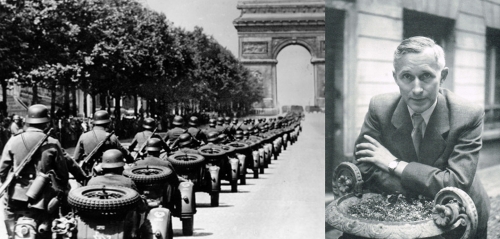



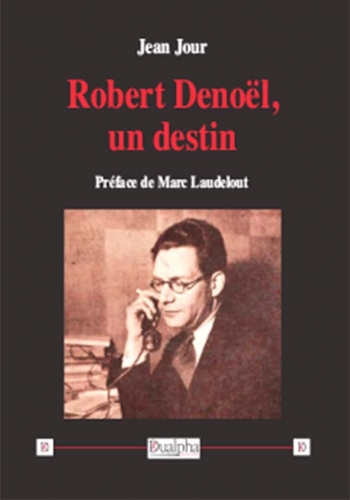 Tragique destin que celui de ce jeune Liégeois qui n’aura pu exercer sa profession que durant une quinzaine d’années. Pour beaucoup, il demeure le découvreur de Céline auquel son nom demeure associé. Et pourtant nombreuses sont les œuvres importantes du XXe siècle qu’il aura publiées : L’Hôtel du Nord d’Eugène Dabit, Héliogabale d’Artaud, Tropismes de Nathalie Sarraute, Les Beaux Quartiers d’Aragon, Les Décombres de Rebatet, Le Bonheur des tristes de Luc Dietrich, Les Marais de Dominique Rolin, Notre-Dame des Fleurs de Jean Genet, pour ne citer que les plus connues.
Tragique destin que celui de ce jeune Liégeois qui n’aura pu exercer sa profession que durant une quinzaine d’années. Pour beaucoup, il demeure le découvreur de Céline auquel son nom demeure associé. Et pourtant nombreuses sont les œuvres importantes du XXe siècle qu’il aura publiées : L’Hôtel du Nord d’Eugène Dabit, Héliogabale d’Artaud, Tropismes de Nathalie Sarraute, Les Beaux Quartiers d’Aragon, Les Décombres de Rebatet, Le Bonheur des tristes de Luc Dietrich, Les Marais de Dominique Rolin, Notre-Dame des Fleurs de Jean Genet, pour ne citer que les plus connues.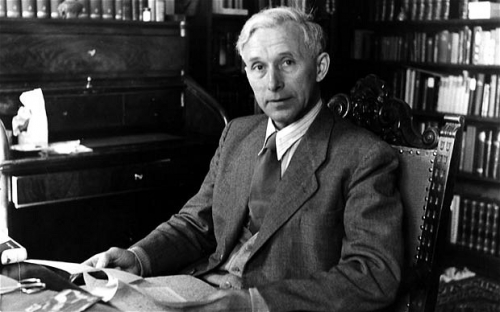
 Le Rebelle et l’Anarque sont ces figures, ces paradigmes, ces « représentations » offertes à la reconnaissance de l’homme qui les perçoit comme manifestation épiphaniques insaisissables par la pensée mais s’imposant à l’évidence, pour peu qu’il accepte – l’homme n’est jamais contraint que par soi-même dans la vision jüngerienne du monde – de ne pas lui tourner le dos.
Le Rebelle et l’Anarque sont ces figures, ces paradigmes, ces « représentations » offertes à la reconnaissance de l’homme qui les perçoit comme manifestation épiphaniques insaisissables par la pensée mais s’imposant à l’évidence, pour peu qu’il accepte – l’homme n’est jamais contraint que par soi-même dans la vision jüngerienne du monde – de ne pas lui tourner le dos.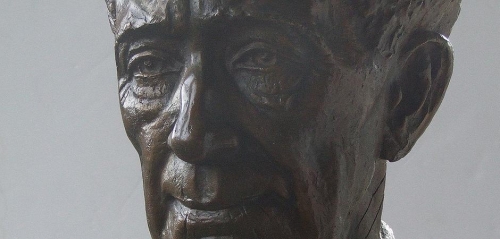
 The first phase is the actively nihilistic phase. You can find this distinction in The Will to Power. Nietzsche explains that there are two kinds of nihilism. The first one is passive nihilism. It’s like a decrease in the strength of the spirit. It’s weariness. It’s weakness. It’s like a quasi-Buddhist “no” to life. It’s the will to hide from the suffering of life. So it is like an exhaustion, a devirilization, as we would say today. And for Nietzsche, of course, this was not only something metaphysical. It directly corresponded to the historical reality of Europe, and back in the nineteenth century, he said that Europe was now an aging Europe, an old Europe, a cosmopolitan Europe headed towards globalization. Not incidentally, Nietzsche was one of the pioneers of pan-Europeanism. I will also talk about that.
The first phase is the actively nihilistic phase. You can find this distinction in The Will to Power. Nietzsche explains that there are two kinds of nihilism. The first one is passive nihilism. It’s like a decrease in the strength of the spirit. It’s weariness. It’s weakness. It’s like a quasi-Buddhist “no” to life. It’s the will to hide from the suffering of life. So it is like an exhaustion, a devirilization, as we would say today. And for Nietzsche, of course, this was not only something metaphysical. It directly corresponded to the historical reality of Europe, and back in the nineteenth century, he said that Europe was now an aging Europe, an old Europe, a cosmopolitan Europe headed towards globalization. Not incidentally, Nietzsche was one of the pioneers of pan-Europeanism. I will also talk about that.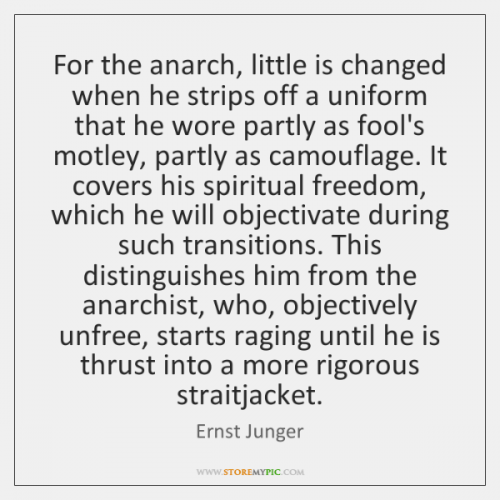

 So this is the concept of sovereignty. And the model of the Anarch was represented by a historian, Martin Manuel Venator, who serves in a fortress of the tyrant of a future city-state, Condor. He works in his fortress at night, at the bar, and he listens to different conversations among the visitors and writes down his reflections, and he says, “I am an Anarch in space, and a meta-historian in time.” At first, this conception of the Anarch was taken differently by Ernst Jünger’s colleagues in the Third Way. For instance, Julius Evola believed that the concept of the forest passage, of Der Waldgang, was a betrayal of Jünger’s early views. He said that it is a reverse version of Ernst Jünger as we knew him. It’s as if he felt there was something bourgeois about this concept. But ten years later, Evola developed exactly the same concept of the differentiated personality in his book, Ride the Tiger. He also developed the concept of apoliteia, and later he wrote
So this is the concept of sovereignty. And the model of the Anarch was represented by a historian, Martin Manuel Venator, who serves in a fortress of the tyrant of a future city-state, Condor. He works in his fortress at night, at the bar, and he listens to different conversations among the visitors and writes down his reflections, and he says, “I am an Anarch in space, and a meta-historian in time.” At first, this conception of the Anarch was taken differently by Ernst Jünger’s colleagues in the Third Way. For instance, Julius Evola believed that the concept of the forest passage, of Der Waldgang, was a betrayal of Jünger’s early views. He said that it is a reverse version of Ernst Jünger as we knew him. It’s as if he felt there was something bourgeois about this concept. But ten years later, Evola developed exactly the same concept of the differentiated personality in his book, Ride the Tiger. He also developed the concept of apoliteia, and later he wrote 

 When Orwell finished Animal Farm in 1945, it was a very bad time to promote anti-Communist books with talking animals. This one was too clearly an allegory about the Bolshevik Revolution and the Stalinist aftermath, as subtle as a cow-pie (one barnyard feature that does not appear in the book). Over two dozen publishers rejected it promptly; Churchill’s coalition government had been touting a pro-Soviet line since 1941. Against this background, Animal Farm was about as welcome as a sympathetic book review of Mein Kampf (which Orwell did in fact once publish, during the Phony War period).
When Orwell finished Animal Farm in 1945, it was a very bad time to promote anti-Communist books with talking animals. This one was too clearly an allegory about the Bolshevik Revolution and the Stalinist aftermath, as subtle as a cow-pie (one barnyard feature that does not appear in the book). Over two dozen publishers rejected it promptly; Churchill’s coalition government had been touting a pro-Soviet line since 1941. Against this background, Animal Farm was about as welcome as a sympathetic book review of Mein Kampf (which Orwell did in fact once publish, during the Phony War period). But the use of pigs raises all sorts of other complications. All the male pigs but Napoleon, we are told, have been castrated. This fact is introduced late in the book, and rather obliquely: “Napoleon was the only boar on the farm.” But hold on: Napoleon has sired many porkers, presumably male often as not. Surely they’re still intact – some of them, anyway. Is Orwell just being forgetful, or does he fear certain distasteful matters will slow down the story?
But the use of pigs raises all sorts of other complications. All the male pigs but Napoleon, we are told, have been castrated. This fact is introduced late in the book, and rather obliquely: “Napoleon was the only boar on the farm.” But hold on: Napoleon has sired many porkers, presumably male often as not. Surely they’re still intact – some of them, anyway. Is Orwell just being forgetful, or does he fear certain distasteful matters will slow down the story?
 C’est à Rome que j’ai appris la disparition en avril du cher Jean-Claude Albert-Weil (1933-2019), l’un des écrivains les plus singuliers que j’ai rencontrés. Cette chance, je la dois à mon ami Marc Laudelout, l’éditeur du Bulletin célinien, qui, vers 1997, attira mon attention et celle de quelques happy few sur un hallucinant roman, mixte de Swift et de Philip K. Dick, Sont les oiseaux.
C’est à Rome que j’ai appris la disparition en avril du cher Jean-Claude Albert-Weil (1933-2019), l’un des écrivains les plus singuliers que j’ai rencontrés. Cette chance, je la dois à mon ami Marc Laudelout, l’éditeur du Bulletin célinien, qui, vers 1997, attira mon attention et celle de quelques happy few sur un hallucinant roman, mixte de Swift et de Philip K. Dick, Sont les oiseaux. Je ne fus pas séduit par ces suites dont le délire narratif et langagier me rebuta. Je pense que Jean-Claude Albert-Weil fut l’homme d’un seul livre, un roman-monde où il déversa d’un coup et dans le bon ordre ses phantasmes de démiurge. Je l’avais perdu de vue depuis longtemps, ce qui n’atténue en rien ma peine à l’idée de ne plus revoir cet homme unique qui m’aimait bien.
Je ne fus pas séduit par ces suites dont le délire narratif et langagier me rebuta. Je pense que Jean-Claude Albert-Weil fut l’homme d’un seul livre, un roman-monde où il déversa d’un coup et dans le bon ordre ses phantasmes de démiurge. Je l’avais perdu de vue depuis longtemps, ce qui n’atténue en rien ma peine à l’idée de ne plus revoir cet homme unique qui m’aimait bien. 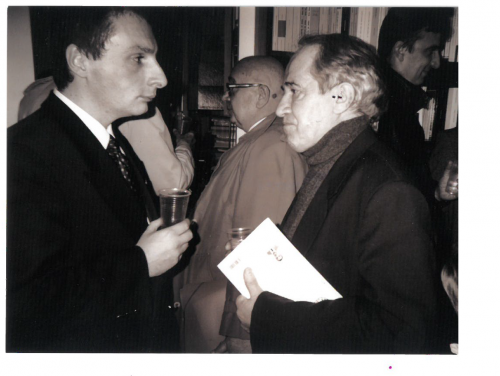




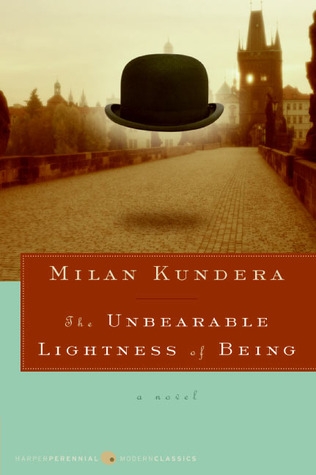 I first read Kundera’s
I first read Kundera’s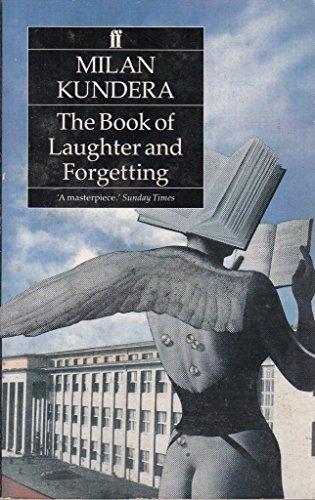 One of the reasons Mao’s genocides are not widely known about is because they are complex and covered two periods over a total of seven years. Information on the internet tends to be reduced into fast-read simplified narratives. If any facts are under dispute we have a tendency to shrug and dismiss the entire issue. So it is precisely the ambiguity over whether Mao’s Communist Party was responsible for 30, 50 or 70 million deaths that leads to internet users giving up on the subject.
One of the reasons Mao’s genocides are not widely known about is because they are complex and covered two periods over a total of seven years. Information on the internet tends to be reduced into fast-read simplified narratives. If any facts are under dispute we have a tendency to shrug and dismiss the entire issue. So it is precisely the ambiguity over whether Mao’s Communist Party was responsible for 30, 50 or 70 million deaths that leads to internet users giving up on the subject. Until the data on the deaths in communist China are definitively agreed, until they enter the history books, conflicting data will keep on being used to conceal the magnitude of Mao’s crimes. We also see this happening with the Ukranian genocide known as Holodomor (1932–33). Different political groups argue about whether the deaths were three million or 10, which then gives space to other groups online who want to deny it ever occurred.
Until the data on the deaths in communist China are definitively agreed, until they enter the history books, conflicting data will keep on being used to conceal the magnitude of Mao’s crimes. We also see this happening with the Ukranian genocide known as Holodomor (1932–33). Different political groups argue about whether the deaths were three million or 10, which then gives space to other groups online who want to deny it ever occurred.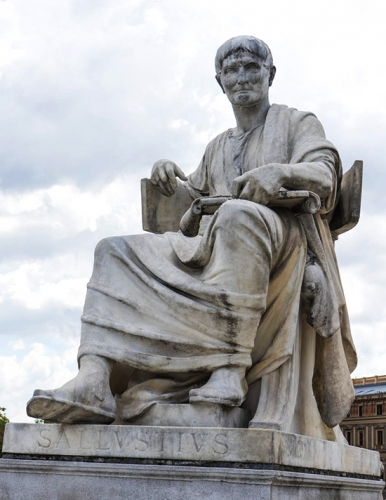
 Avant que l’on commence à se lamenter sur les décadences décrites par nos ancêtres romains et jusque par nos auteurs contemporains, et quelle que soit l’appellation qui leur fut attribuée par les critiques modernes, « nationalistes », « identitaires », « traditionalistes de la droite alternative, » « de la droite extrême » et j’en passe, il est essentiel de mentionner deux écrivains modernes qui signalèrent l’arrivée de la décadence bien que leur approche respective du contenu et des causes de la décadence fut très divergente. Ce sont l’Allemand Oswald Spengler avec son Déclin de l’Occident, écrit au début du XXème siècle, et le Français Arthur de Gobineau avec son gros ouvrage Essai sur l'inégalité des races humaines, écrit soixante ans plut tôt. Tous deux étaient des écrivains d’une grande culture, tous deux partageaient la même vision apocalyptique de l’Europe à venir, tous deux peuvent être appelés des pessimistes culturels avec un sens du tragique fort raffiné. Or pour le premier de ces auteurs, Spengler, la décadence est le résultat du vieillissement biologique naturel de chaque peuple sur terre, vieillissement qui l’amène à un moment historique à sa mort inévitable. Pour le second, Gobineau, la décadence est due à l’affaiblissement de la conscience raciale qui fait qu’un peuple adopte le faux altruisme tout en ouvrant les portes de la cité aux anciens ennemis, c’est-à-dire aux Autres d’une d’autre race, ce qui le conduit peu à peu à s’adonner au métissage et finalement à accepter sa propre mort. À l’instar de Gobineau, des observations à peu près similaires seront faites par des savants allemands entre les deux guerres. On doit pourtant faire ici une nette distinction entre les causes et les effets de la décadence. Le tedium vitae (fatigue de vivre), la corruption des mœurs, la débauche, l’avarice, ne sont que les effets de la disparation de la conscience raciale et non sa cause. Le mélange des races et le métissage, des termes qui sont mal vus aujourd’hui par le Système et ses serviteurs, étaient désignés par Gobineau par le terme de « dégénérescence ». Selon lui, celle-ci fonctionne dorénavant, comme une machine à broyer le patrimoine génétique des peuples européens. Voici une courte citation de son livre :
Avant que l’on commence à se lamenter sur les décadences décrites par nos ancêtres romains et jusque par nos auteurs contemporains, et quelle que soit l’appellation qui leur fut attribuée par les critiques modernes, « nationalistes », « identitaires », « traditionalistes de la droite alternative, » « de la droite extrême » et j’en passe, il est essentiel de mentionner deux écrivains modernes qui signalèrent l’arrivée de la décadence bien que leur approche respective du contenu et des causes de la décadence fut très divergente. Ce sont l’Allemand Oswald Spengler avec son Déclin de l’Occident, écrit au début du XXème siècle, et le Français Arthur de Gobineau avec son gros ouvrage Essai sur l'inégalité des races humaines, écrit soixante ans plut tôt. Tous deux étaient des écrivains d’une grande culture, tous deux partageaient la même vision apocalyptique de l’Europe à venir, tous deux peuvent être appelés des pessimistes culturels avec un sens du tragique fort raffiné. Or pour le premier de ces auteurs, Spengler, la décadence est le résultat du vieillissement biologique naturel de chaque peuple sur terre, vieillissement qui l’amène à un moment historique à sa mort inévitable. Pour le second, Gobineau, la décadence est due à l’affaiblissement de la conscience raciale qui fait qu’un peuple adopte le faux altruisme tout en ouvrant les portes de la cité aux anciens ennemis, c’est-à-dire aux Autres d’une d’autre race, ce qui le conduit peu à peu à s’adonner au métissage et finalement à accepter sa propre mort. À l’instar de Gobineau, des observations à peu près similaires seront faites par des savants allemands entre les deux guerres. On doit pourtant faire ici une nette distinction entre les causes et les effets de la décadence. Le tedium vitae (fatigue de vivre), la corruption des mœurs, la débauche, l’avarice, ne sont que les effets de la disparation de la conscience raciale et non sa cause. Le mélange des races et le métissage, des termes qui sont mal vus aujourd’hui par le Système et ses serviteurs, étaient désignés par Gobineau par le terme de « dégénérescence ». Selon lui, celle-ci fonctionne dorénavant, comme une machine à broyer le patrimoine génétique des peuples européens. Voici une courte citation de son livre : L’écrivain Salluste est important à plusieurs titres. Primo, il fut le contemporain de la conjuration de Catilina, un noble romain ambitieux qui avec nombre de ses consorts de la noblesse décadente de Rome faillit renverser la république romaine et imposer la dictature. Salluste fut partisan de Jules César qui était devenu le dictateur auto-proclamé de Rome suite aux interminables guerres civiles qui avaient appauvri le fonds génétique de nombreux patriciens romains à Rome.
L’écrivain Salluste est important à plusieurs titres. Primo, il fut le contemporain de la conjuration de Catilina, un noble romain ambitieux qui avec nombre de ses consorts de la noblesse décadente de Rome faillit renverser la république romaine et imposer la dictature. Salluste fut partisan de Jules César qui était devenu le dictateur auto-proclamé de Rome suite aux interminables guerres civiles qui avaient appauvri le fonds génétique de nombreux patriciens romains à Rome.
 Les lignes de Juvénal sont écrites en hexamètres dactyliques ce qui veut dire en gros un usage d’échanges rythmiques entre syllabes brèves ou longues qui fournissent à chacune de ses satires une tonalité dramatique et théâtrale qui était très à la mode chez les Anciens y compris chez Homère dans ses épopées. À l’hexamètre latin, le traducteur français a substitué les mètres syllabiques rimés qui ont fort bien capturé le sarcasme désabusé de l’original de Juvénal. On est tenté de qualifier Juvénal de Louis Ferdinand Céline de l‘Antiquité. Dans sa fameuse VIème satire, qui s’intitule Les Femmes, Juvénal décrit la prolifération de charlatans venus à Rome d’Asie et d’Orient et qui introduisent dans les mœurs romaines la mode de la zoophilie et de la pédophilie et d’autres vices. Le langage de Juvénal décrivant les perversions sexuelles importées à Rome par des nouveaux venues asiatiques et africains ferait même honte aux producteurs d’Hollywood aujourd’hui. Voici quelques-uns de ses vers traduits en français, de manière soignés car destinés aujourd’hui au grand public :
Les lignes de Juvénal sont écrites en hexamètres dactyliques ce qui veut dire en gros un usage d’échanges rythmiques entre syllabes brèves ou longues qui fournissent à chacune de ses satires une tonalité dramatique et théâtrale qui était très à la mode chez les Anciens y compris chez Homère dans ses épopées. À l’hexamètre latin, le traducteur français a substitué les mètres syllabiques rimés qui ont fort bien capturé le sarcasme désabusé de l’original de Juvénal. On est tenté de qualifier Juvénal de Louis Ferdinand Céline de l‘Antiquité. Dans sa fameuse VIème satire, qui s’intitule Les Femmes, Juvénal décrit la prolifération de charlatans venus à Rome d’Asie et d’Orient et qui introduisent dans les mœurs romaines la mode de la zoophilie et de la pédophilie et d’autres vices. Le langage de Juvénal décrivant les perversions sexuelles importées à Rome par des nouveaux venues asiatiques et africains ferait même honte aux producteurs d’Hollywood aujourd’hui. Voici quelques-uns de ses vers traduits en français, de manière soignés car destinés aujourd’hui au grand public : Il va de soi que les anciens Romains ignoraient le lois mendéliennes de l’hérédité ainsi que les complexités du fonctionnement de l’ADN, mais ils savaient fort bien comment distinguer un barbare venu d’Europe du nord d’un barbare venu d’Afrique. Certains esclaves étaient fort prisés, tels les Germains qui servaient même de garde de corps auprès des empereurs romains. En revanche, certains esclaves venues d’Asie mineure et d’Afrique, étaient mal vus et faisaient l’objet de blagues et de dérisions populaires.
Il va de soi que les anciens Romains ignoraient le lois mendéliennes de l’hérédité ainsi que les complexités du fonctionnement de l’ADN, mais ils savaient fort bien comment distinguer un barbare venu d’Europe du nord d’un barbare venu d’Afrique. Certains esclaves étaient fort prisés, tels les Germains qui servaient même de garde de corps auprès des empereurs romains. En revanche, certains esclaves venues d’Asie mineure et d’Afrique, étaient mal vus et faisaient l’objet de blagues et de dérisions populaires.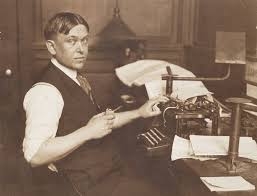
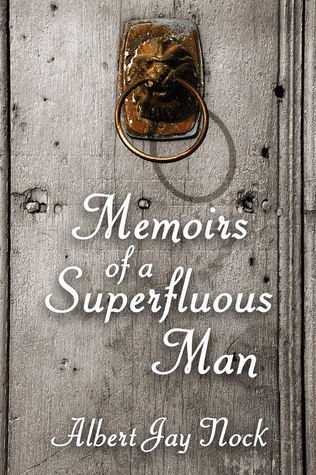 It may be Nock’s “
It may be Nock’s “
 Qui l’eût cru ? La très sage, la respectueuse, la tranquille Alsace et ses habitants, souvent plus français (« Hourrah Franzosen ») que les Français eux-mêmes, ruent depuis quelques mois dans les brancards hexagonaux, réclamant un « Elsass-Exit » de cette région Grand Est bricolée à la hâte par Hollande à la fin de son mandat présidentiel, redessinée dans ses contours avec Manuel Valls, sur un coin de table élyséen. L’un de ses contempteurs les mieux inspirés, Martin Graff, le « trublion franco-allemand », est de ceux, avec les militants d’Unserland, que cette dissolution de force de l’Alsace dans le Grand Est hérissait au plus haut point. Inlassable pourfendeur des diktats parisiens, cet éternel « empêcheur de penser en rond » – bienvenue au club – nous avait pourtant prévenus dans son abrasif best-seller alsacien
Qui l’eût cru ? La très sage, la respectueuse, la tranquille Alsace et ses habitants, souvent plus français (« Hourrah Franzosen ») que les Français eux-mêmes, ruent depuis quelques mois dans les brancards hexagonaux, réclamant un « Elsass-Exit » de cette région Grand Est bricolée à la hâte par Hollande à la fin de son mandat présidentiel, redessinée dans ses contours avec Manuel Valls, sur un coin de table élyséen. L’un de ses contempteurs les mieux inspirés, Martin Graff, le « trublion franco-allemand », est de ceux, avec les militants d’Unserland, que cette dissolution de force de l’Alsace dans le Grand Est hérissait au plus haut point. Inlassable pourfendeur des diktats parisiens, cet éternel « empêcheur de penser en rond » – bienvenue au club – nous avait pourtant prévenus dans son abrasif best-seller alsacien  Il faudrait également, au Panthéon des écrivains rebelles alsaciens contemporains, ne pas oublier Louis Schittly, cofondateur avec Bernard Kouchner de Médecins sans frontières, et à ce titre colauréat du prix Nobel de la paix. Le sundgauvien Louis Schittly (
Il faudrait également, au Panthéon des écrivains rebelles alsaciens contemporains, ne pas oublier Louis Schittly, cofondateur avec Bernard Kouchner de Médecins sans frontières, et à ce titre colauréat du prix Nobel de la paix. Le sundgauvien Louis Schittly (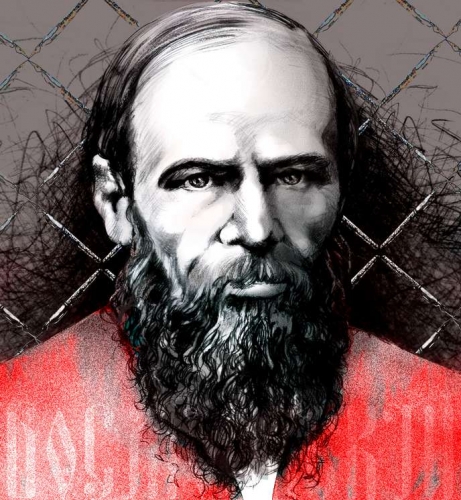
 On reprend donc Raskolnikoff dans ces pages immortelles :
On reprend donc Raskolnikoff dans ces pages immortelles :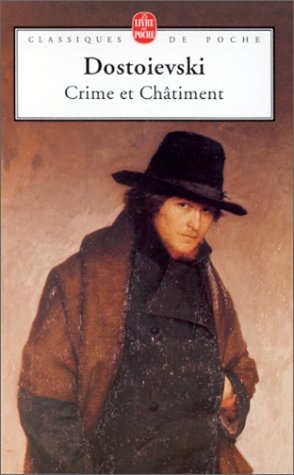 « En un mot, je démontre que non seulement les grands hommes, mais tous ceux qui sortent tant soit peu de l’ornière, tous ceux qui sont capables de dire quelque chose de nouveau, même pas grand-chose, doivent, de par leur nature, être nécessairement plus ou moins des criminels. »
« En un mot, je démontre que non seulement les grands hommes, mais tous ceux qui sortent tant soit peu de l’ornière, tous ceux qui sont capables de dire quelque chose de nouveau, même pas grand-chose, doivent, de par leur nature, être nécessairement plus ou moins des criminels. »



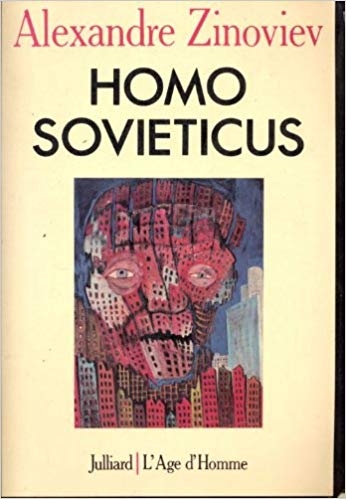
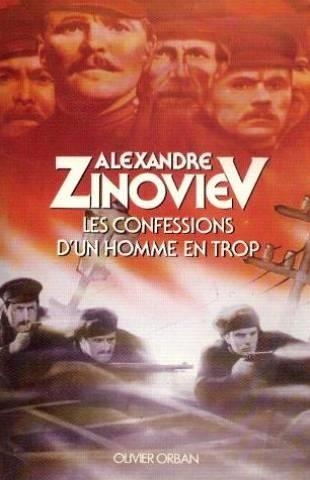

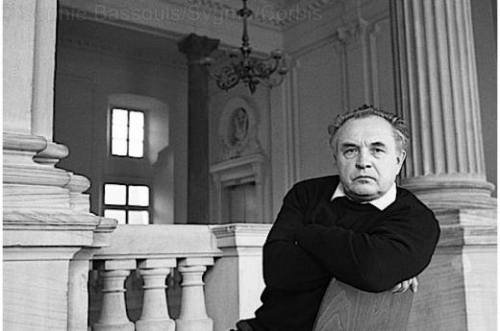

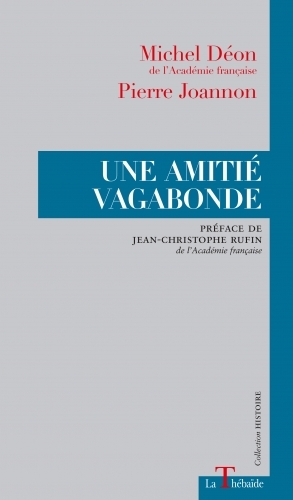 - Pierre Joannon : Navré de vous décevoir ! Aucune goutte de sang irlandais ne coulait dans mes veines jusqu’à une date récente. En 1997, le Taoiseach(Premier ministre) de l’époque a dû sans doute estimer qu’il y avait là une lacune à combler, et il me fit octroyer la nationalité irlandaise, une reconnaissance dont je ne suis pas peu fier. On peut en tirer deux observations : que l’Irlande sait reconnaître les siens, et qu’on peut choisir ses racines au lieu de se contenter de les recevoir en héritage ! D’où me vient cette passion pour l’Irlande ? D’un voyage fortuit effectué au début des années soixante. J’ai eu le coup de foudre pour les paysages du Kerry et du Connemara qui correspondaient si exactement au pays rêvé que chacun porte en soi sans toujours avoir la chance de le rencontrer. Et le méditerranéen que je suis fut immédiatement séduit par ce peuple de conteurs disert, roublard et émouvant, prompt à passer du rire aux larmes avec un bonheur d’expression qui a disparu dans nos sociétés dites évoluées. L’histoire de cette île venait à point nommé répondre à certaines interrogations qui étaient les miennes au lendemain de la débâcle algérienne. Je me mis à lire tous les ouvrages qui me tombaient sous la main, tant en français qu’en anglais. Etudiant en droit, je consacrais ma thèse de doctorat d’Etat à la constitution de l’Etat Libre d’Irlande de 1922 et à la constitution de l’Eire concoctée par Eamon de Valera en 1937. Un premier livre sur l’Irlande, paru aux Editions Plon grâce à l’appui bienveillant de Marcel Jullian, me valut une distinction de l’Académie Française. A quelques temps de là, le professeur Patrick Rafroidi qui avait créé au sein de l’Université de Lille un Centre d’études et de recherches irlandaise unique en France, m’offrit de diriger avec lui la revue universitaire Etudes Irlandaises. En acceptant, je ne me doutais guère que j’en assumerai les fonctions de corédacteur en chef pendant vingt-huit ans. Je publiais, dans le même temps plusieurs ouvrages sur le nationalisme irlandais, sur le débarquement des Français dans le comté de Mayo en 1798, sur de Gaulle et ses rapports avec l’Irlande dont étaient originaires ses ancêtres Mac Cartan, sur Michael Collins et la guerre d’indépendance anglo-irlandaise de 1919-1921, sur John Hume et l’évolution du processus de paix nord-irlandais. J’organisais également plusieurs colloques sur la Verte Erin à la Sorbonne, au Collège de France, à l’UNESCO, à l’Académie de la Paix et de la Sécurité Internationale et à l’Université de Nice. Enfin, en 1989, je pris l’initiative de créer la branche française de la Confédération des Ireland Funds, la plus importante organisation internationale non gouvernementale d’aide à l’Irlande réunissant à travers le monde Irlandais de souche, Irlandais de la diaspora et amis de l’Irlande. Vecteur privilégié de l’amitié entre nos deux pays, l’Ireland Fund de France que je préside distribue des bourses à des étudiants des deux pays, subventionne des manifestations culturelles d’intérêt commun et participe activement à l’essor des relations bilatérales dans tous les domaines. Ainsi que vous pouvez le constater, l’Irlande a fait boule de neige dans ma vie, sans que cela ait été le moins du monde prémédité. Le hasard fait parfois bien les choses.
- Pierre Joannon : Navré de vous décevoir ! Aucune goutte de sang irlandais ne coulait dans mes veines jusqu’à une date récente. En 1997, le Taoiseach(Premier ministre) de l’époque a dû sans doute estimer qu’il y avait là une lacune à combler, et il me fit octroyer la nationalité irlandaise, une reconnaissance dont je ne suis pas peu fier. On peut en tirer deux observations : que l’Irlande sait reconnaître les siens, et qu’on peut choisir ses racines au lieu de se contenter de les recevoir en héritage ! D’où me vient cette passion pour l’Irlande ? D’un voyage fortuit effectué au début des années soixante. J’ai eu le coup de foudre pour les paysages du Kerry et du Connemara qui correspondaient si exactement au pays rêvé que chacun porte en soi sans toujours avoir la chance de le rencontrer. Et le méditerranéen que je suis fut immédiatement séduit par ce peuple de conteurs disert, roublard et émouvant, prompt à passer du rire aux larmes avec un bonheur d’expression qui a disparu dans nos sociétés dites évoluées. L’histoire de cette île venait à point nommé répondre à certaines interrogations qui étaient les miennes au lendemain de la débâcle algérienne. Je me mis à lire tous les ouvrages qui me tombaient sous la main, tant en français qu’en anglais. Etudiant en droit, je consacrais ma thèse de doctorat d’Etat à la constitution de l’Etat Libre d’Irlande de 1922 et à la constitution de l’Eire concoctée par Eamon de Valera en 1937. Un premier livre sur l’Irlande, paru aux Editions Plon grâce à l’appui bienveillant de Marcel Jullian, me valut une distinction de l’Académie Française. A quelques temps de là, le professeur Patrick Rafroidi qui avait créé au sein de l’Université de Lille un Centre d’études et de recherches irlandaise unique en France, m’offrit de diriger avec lui la revue universitaire Etudes Irlandaises. En acceptant, je ne me doutais guère que j’en assumerai les fonctions de corédacteur en chef pendant vingt-huit ans. Je publiais, dans le même temps plusieurs ouvrages sur le nationalisme irlandais, sur le débarquement des Français dans le comté de Mayo en 1798, sur de Gaulle et ses rapports avec l’Irlande dont étaient originaires ses ancêtres Mac Cartan, sur Michael Collins et la guerre d’indépendance anglo-irlandaise de 1919-1921, sur John Hume et l’évolution du processus de paix nord-irlandais. J’organisais également plusieurs colloques sur la Verte Erin à la Sorbonne, au Collège de France, à l’UNESCO, à l’Académie de la Paix et de la Sécurité Internationale et à l’Université de Nice. Enfin, en 1989, je pris l’initiative de créer la branche française de la Confédération des Ireland Funds, la plus importante organisation internationale non gouvernementale d’aide à l’Irlande réunissant à travers le monde Irlandais de souche, Irlandais de la diaspora et amis de l’Irlande. Vecteur privilégié de l’amitié entre nos deux pays, l’Ireland Fund de France que je préside distribue des bourses à des étudiants des deux pays, subventionne des manifestations culturelles d’intérêt commun et participe activement à l’essor des relations bilatérales dans tous les domaines. Ainsi que vous pouvez le constater, l’Irlande a fait boule de neige dans ma vie, sans que cela ait été le moins du monde prémédité. Le hasard fait parfois bien les choses. - C. G. :
- C. G. : 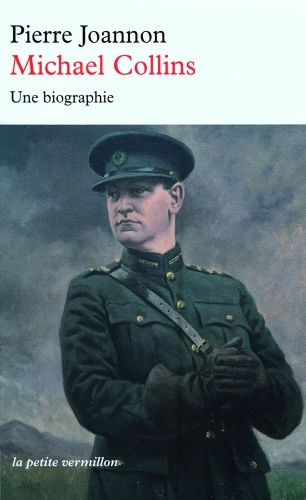 - P. J. : Je suis bien en peine de vous répondre. Il existe tant de figures attachantes ou admirables : Parnell, Michael Collins, de Valera, John Hume aujourd’hui. Peut-être ai-je une prédilection pour Theobald Wolfe Tone, ce jeune avocat protestant qui fut, au dix-huitième siècle, « l’inventeur » du nationalisme irlandais après avoir échoué à intéresser les Anglais à un fumeux projet de colonisation. Il voulait émanciper les catholiques, mobiliser les protestants, liquider les dissensions religieuses au profit d’une conception éclairée de la citoyenneté, briser les liens de sujétion à l’Angleterre. Artisan de l’alliance franco-irlandaise il a laissé un merveilleux journal narrant ses aventures et ses intrigues dans le Paris du Directoire. On y découvre un jeune homme curieux, gai, aimant les femmes et le bon vin, fasciné par le théâtre et les défilés militaires, enthousiasmé par Hoche et beaucoup moins par Bonaparte. Capturé par les Anglais à la suite du piteux échec d’une tentative de débarquement français en Irlande, il sollicita de la cour martiale qui le jugeait la faveur d’être passé par les armes « pour avoir eu l’honneur de porter l’uniforme français ». Elle lui fut refusée : il fut condamné au gibet. La veille de l’exécution, il se trancha la gorge avec un canif et agonisa toute une semaine avant d’expirer le 19 novembre 1798.
- P. J. : Je suis bien en peine de vous répondre. Il existe tant de figures attachantes ou admirables : Parnell, Michael Collins, de Valera, John Hume aujourd’hui. Peut-être ai-je une prédilection pour Theobald Wolfe Tone, ce jeune avocat protestant qui fut, au dix-huitième siècle, « l’inventeur » du nationalisme irlandais après avoir échoué à intéresser les Anglais à un fumeux projet de colonisation. Il voulait émanciper les catholiques, mobiliser les protestants, liquider les dissensions religieuses au profit d’une conception éclairée de la citoyenneté, briser les liens de sujétion à l’Angleterre. Artisan de l’alliance franco-irlandaise il a laissé un merveilleux journal narrant ses aventures et ses intrigues dans le Paris du Directoire. On y découvre un jeune homme curieux, gai, aimant les femmes et le bon vin, fasciné par le théâtre et les défilés militaires, enthousiasmé par Hoche et beaucoup moins par Bonaparte. Capturé par les Anglais à la suite du piteux échec d’une tentative de débarquement français en Irlande, il sollicita de la cour martiale qui le jugeait la faveur d’être passé par les armes « pour avoir eu l’honneur de porter l’uniforme français ». Elle lui fut refusée : il fut condamné au gibet. La veille de l’exécution, il se trancha la gorge avec un canif et agonisa toute une semaine avant d’expirer le 19 novembre 1798.
 Cinematographer Franz Lustig’s opening scenes confront even the most unsuspecting and ill-informed audience with the sight of an almost obliterated Hamburg filled with crumbling buildings. Raw footage shows, or at least intimates, that a deliberate and premeditated plan had achieved its desired effect of sending Germany back to the Stone Age. This plan, codenamed Operation Gomorrah, which was at the time the heaviest aerial assault ever undertaken, was later called “Germany’s Hiroshima” by British Bomber Command. Reel after reel offers shocking images: black-and white photo montages of the chaff-filled skies and the abhorrent results of the merciless firebombing that had raised a four-hundred-and-sixty-meter scorching-hot tornado that reached temperatures of up to eight hundred degrees Celsius, and swept over twenty-one square kilometers of the city. Carried out by Lancaster, Wellington, Stirling, and Halifax aircraft, their blockbuster bombs turned asphalt streets into rivers of flame, asphyxiating young and old alike in a sea of carbon monoxide, and as one eyewitness later recalled, it “sucked people like dry leaves into its molten heart.”
Cinematographer Franz Lustig’s opening scenes confront even the most unsuspecting and ill-informed audience with the sight of an almost obliterated Hamburg filled with crumbling buildings. Raw footage shows, or at least intimates, that a deliberate and premeditated plan had achieved its desired effect of sending Germany back to the Stone Age. This plan, codenamed Operation Gomorrah, which was at the time the heaviest aerial assault ever undertaken, was later called “Germany’s Hiroshima” by British Bomber Command. Reel after reel offers shocking images: black-and white photo montages of the chaff-filled skies and the abhorrent results of the merciless firebombing that had raised a four-hundred-and-sixty-meter scorching-hot tornado that reached temperatures of up to eight hundred degrees Celsius, and swept over twenty-one square kilometers of the city. Carried out by Lancaster, Wellington, Stirling, and Halifax aircraft, their blockbuster bombs turned asphalt streets into rivers of flame, asphyxiating young and old alike in a sea of carbon monoxide, and as one eyewitness later recalled, it “sucked people like dry leaves into its molten heart.”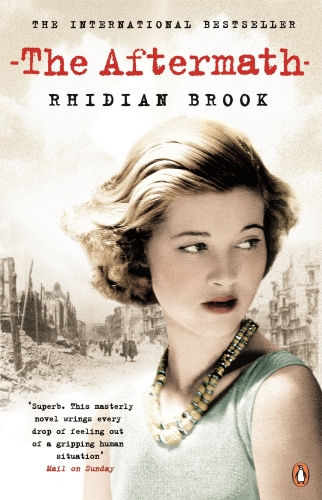 Stefan Lubert (Alexander Skarsgard), a widower, and his daughter Freda (Flora Thiemann), are the people whose palatial home Rachael has in effect invaded when it is requisitioned by the occupying forces to billet the Morgans. Rachael insists, “I want them out!”, which means in effect expelling them to the refugee camps. She also asks them difficult questions about a certain portrait that had only recently been removed from a place of honor over their fireplace and hurriedly replaced by another painting. These are petty acts of spiteful sadism that were no doubt common practice and openly endorsed by the non-fraternization code at that time, but in the context of the film’s narrative clearly signals more about Rachael’s own insecurities than it does about any misdemeanors or malicious intent on the part of those in whose home she resides.
Stefan Lubert (Alexander Skarsgard), a widower, and his daughter Freda (Flora Thiemann), are the people whose palatial home Rachael has in effect invaded when it is requisitioned by the occupying forces to billet the Morgans. Rachael insists, “I want them out!”, which means in effect expelling them to the refugee camps. She also asks them difficult questions about a certain portrait that had only recently been removed from a place of honor over their fireplace and hurriedly replaced by another painting. These are petty acts of spiteful sadism that were no doubt common practice and openly endorsed by the non-fraternization code at that time, but in the context of the film’s narrative clearly signals more about Rachael’s own insecurities than it does about any misdemeanors or malicious intent on the part of those in whose home she resides.

 Comme le remarqueront les lecteurs du Songe d’Empédocle, le jeune Padraig est du genre à avoir « la nuque raide », pour citer l’Ancien Testament, une fois n’est pas coutume. Je veux dire que ses origines hiberniennes et brabançonnes ne prédisposent en rien cet homme archaïque à la soumission, fût-elle grimée en divertissement festif, ni à la docile acceptation des dogmes, quelle que soit leur date de fabrication. Druide et barde à la fois, il ne peut que suffoquer dans l’étouffoir spirituel que représente son époque, définie en ces termes par le regretté Philippe Muray : « Le grand bain multicolore du consentir liquéfiant ».
Comme le remarqueront les lecteurs du Songe d’Empédocle, le jeune Padraig est du genre à avoir « la nuque raide », pour citer l’Ancien Testament, une fois n’est pas coutume. Je veux dire que ses origines hiberniennes et brabançonnes ne prédisposent en rien cet homme archaïque à la soumission, fût-elle grimée en divertissement festif, ni à la docile acceptation des dogmes, quelle que soit leur date de fabrication. Druide et barde à la fois, il ne peut que suffoquer dans l’étouffoir spirituel que représente son époque, définie en ces termes par le regretté Philippe Muray : « Le grand bain multicolore du consentir liquéfiant ». J’en parle dans La Source pérenne, qui retrace mon itinéraire spirituel : en dégageant les ruines d’un sanctuaire païen du Bas Empire, en nettoyant tessons et monnaies de bronze portant la fière devise Soli invicto comiti, en reconstruisant les murs du fanum gallo-romain (car en plus d’être terrassier, j’ai aussi joué au maçon – l’archéologie comme humanisme intégral), j’ai pris conscience de mon identité profonde, antérieure. Ce paganisme ne m’a pas été « enseigné » stricto sensu puisque mon entourage était de tendance rationaliste. Je l’ai redécouvert seul… à moins que les Puissances – celles du sanctuaire ? – ne se soient servies de moi. Les lectures, les fouilles, le goût du latin puis du grec, des expériences de type panthéiste à l’adolescence dans nos forêts, tout cela a fait de moi un polythéiste dès l’âge de seize ans. Depuis, je n’ai pas dévié et n’ai aucunement l’intention de le faire : je creuse mon sillon, en loyal paganus.
J’en parle dans La Source pérenne, qui retrace mon itinéraire spirituel : en dégageant les ruines d’un sanctuaire païen du Bas Empire, en nettoyant tessons et monnaies de bronze portant la fière devise Soli invicto comiti, en reconstruisant les murs du fanum gallo-romain (car en plus d’être terrassier, j’ai aussi joué au maçon – l’archéologie comme humanisme intégral), j’ai pris conscience de mon identité profonde, antérieure. Ce paganisme ne m’a pas été « enseigné » stricto sensu puisque mon entourage était de tendance rationaliste. Je l’ai redécouvert seul… à moins que les Puissances – celles du sanctuaire ? – ne se soient servies de moi. Les lectures, les fouilles, le goût du latin puis du grec, des expériences de type panthéiste à l’adolescence dans nos forêts, tout cela a fait de moi un polythéiste dès l’âge de seize ans. Depuis, je n’ai pas dévié et n’ai aucunement l’intention de le faire : je creuse mon sillon, en loyal paganus.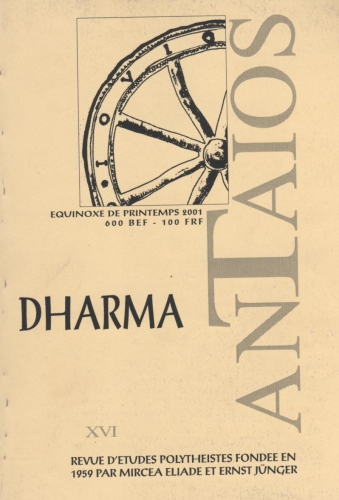 En 1992, comme il n’existait aucune revue sur le paganisme qui correspondît à mes attentes de rigueur et d’ouverture, j’ai décidé de relancer Antaios, deuxième du nom, dans le but de défendre et d’illustrer la vision païenne du monde, et aussi, je le concède, de me faire quelques ennemis. Jünger m’a écrit pour m’encourager ; il me cite d’ailleurs dans l’ultime volume de ses mémoires, Soixante-dix s’efface. Pour son centième anniversaire en 1995, je lui ai fait parvenir la réplique en argent de la rouelle gallo-romaine qui servait d’emblème à Antaios.
En 1992, comme il n’existait aucune revue sur le paganisme qui correspondît à mes attentes de rigueur et d’ouverture, j’ai décidé de relancer Antaios, deuxième du nom, dans le but de défendre et d’illustrer la vision païenne du monde, et aussi, je le concède, de me faire quelques ennemis. Jünger m’a écrit pour m’encourager ; il me cite d’ailleurs dans l’ultime volume de ses mémoires, Soixante-dix s’efface. Pour son centième anniversaire en 1995, je lui ai fait parvenir la réplique en argent de la rouelle gallo-romaine qui servait d’emblème à Antaios.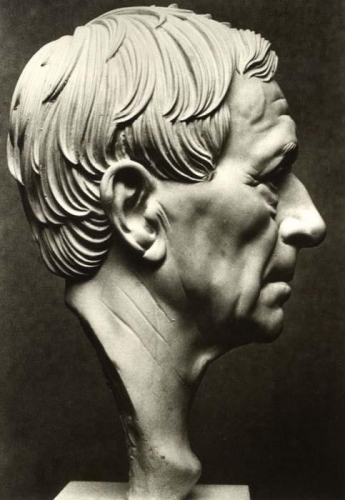 Vous citez volontiers Ernst Jünger parmi vos maîtres, vos créanciers spirituels. Comment avez-vous rencontré son œuvre ?
Vous citez volontiers Ernst Jünger parmi vos maîtres, vos créanciers spirituels. Comment avez-vous rencontré son œuvre ?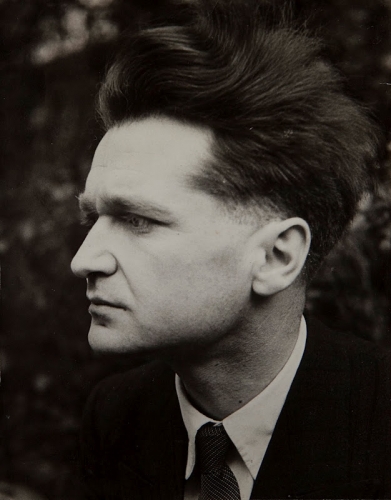
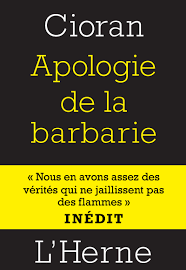 Emil Cioran
Emil Cioran A rare and stimulating combination in Cioran’s writings: unsentimental observation and intense pathos.
A rare and stimulating combination in Cioran’s writings: unsentimental observation and intense pathos.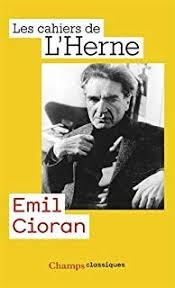 But fascism cannot work miracles. Politics must work with the human material and historical trajectory that one has. That is being true to oneself. To wish for total transformation and the tabula rasa is to invite disaster. Such revolutions are generally an exercise in self-harm. Once the passions and intoxications have settled, one finds the nation stunted and lessened: by civil war, by tyranny, by self-mutilation and deformation in the stubborn in the name of utopian goals. The historic gap with the ‘advanced’ nations is widened further still by the ordeal.
But fascism cannot work miracles. Politics must work with the human material and historical trajectory that one has. That is being true to oneself. To wish for total transformation and the tabula rasa is to invite disaster. Such revolutions are generally an exercise in self-harm. Once the passions and intoxications have settled, one finds the nation stunted and lessened: by civil war, by tyranny, by self-mutilation and deformation in the stubborn in the name of utopian goals. The historic gap with the ‘advanced’ nations is widened further still by the ordeal.
 Mais avant cela, il faut tout d’abord revenir sur quelques caractéristiques majeurs, ainsi que quelques grands thèmes présents,pour ne pas dire constitutifs, de l’œuvre de Lovecraft. Évidemment il y a tout d’abord ces entités primordiales monstrueuses, ces abominations répondant aux noms de Yog-Sothoth, Nyarlathotep ou bien encore Cthulhu. A l’instar de nombreux éléments qui façonnent l’univers de l’auteur, son panthéon noir est sujet à l’intertextualité : le lecteur retrouvera ces monstruosités dans divers nouvelles indépendantes des unes des autres. Ces horreurs sont également citées dans des livres, le plus souvent des vieux grimoires comme le Necronomicon, les Manuscrits Pnakotiques, l’Unaussprechlichen Kulten,etc, eux-aussi présents dans la plupart des écrits de Lovecraft (et il en est de même pour certains lieux, bien réels ou imaginaires). L’intertextualité constitue une véritable toile de fond qui contribue à la création de l’univers « lovecraftien ».
Mais avant cela, il faut tout d’abord revenir sur quelques caractéristiques majeurs, ainsi que quelques grands thèmes présents,pour ne pas dire constitutifs, de l’œuvre de Lovecraft. Évidemment il y a tout d’abord ces entités primordiales monstrueuses, ces abominations répondant aux noms de Yog-Sothoth, Nyarlathotep ou bien encore Cthulhu. A l’instar de nombreux éléments qui façonnent l’univers de l’auteur, son panthéon noir est sujet à l’intertextualité : le lecteur retrouvera ces monstruosités dans divers nouvelles indépendantes des unes des autres. Ces horreurs sont également citées dans des livres, le plus souvent des vieux grimoires comme le Necronomicon, les Manuscrits Pnakotiques, l’Unaussprechlichen Kulten,etc, eux-aussi présents dans la plupart des écrits de Lovecraft (et il en est de même pour certains lieux, bien réels ou imaginaires). L’intertextualité constitue une véritable toile de fond qui contribue à la création de l’univers « lovecraftien ».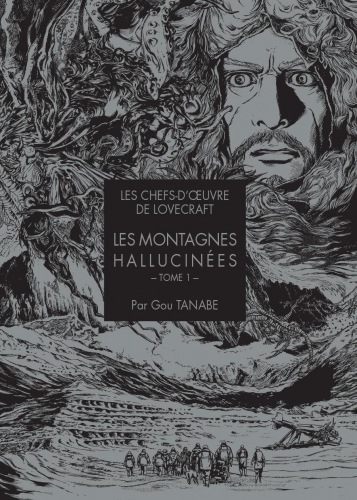 Cette dialectique s’accompagne ainsi d’une atmosphère anti-moderne palpable, voir d’un véritable retour à l’archaïque (type de sculptures, d’architectures, de sociétés humaines, etc). Mais, encore une fois, H.P.Lovecraft pouvait également s’intéresser à des « tendances » de son époque, comme l’eugénisme. Certes Lovecraft était raciste et antisémite – les pseudo-journalistes et autres écrivaillons n’oublient jamais de gloser là-dessus bien évidemment – mais c’est surtout la dégénérescence atavique qui est intéressant chez lui. Les nouvelles La peur qui rode et surtout Le cauchemar d’Innsmouth mettent horriblement en avant ces thèmes, voir aussi celui du Destin.
Cette dialectique s’accompagne ainsi d’une atmosphère anti-moderne palpable, voir d’un véritable retour à l’archaïque (type de sculptures, d’architectures, de sociétés humaines, etc). Mais, encore une fois, H.P.Lovecraft pouvait également s’intéresser à des « tendances » de son époque, comme l’eugénisme. Certes Lovecraft était raciste et antisémite – les pseudo-journalistes et autres écrivaillons n’oublient jamais de gloser là-dessus bien évidemment – mais c’est surtout la dégénérescence atavique qui est intéressant chez lui. Les nouvelles La peur qui rode et surtout Le cauchemar d’Innsmouth mettent horriblement en avant ces thèmes, voir aussi celui du Destin. En 1930, une expédition en Antarctique est organisée par l’Université Miskatonic. Celle-ci est composée de nombreux scientifiques et d’étudiants : biologistes, géologues, et physiciens. Ayant établi leur QG sur le mont Erebus, les premières découvertes ne tardent pas à voir le jour. Enthousiasmé, le Professeur Lake décide de poursuivre les recherches au nord-ouest. C’est en arrivant sur place qu’ils vont découvrir une chaîne de montagnes plus haute encore que l’Himalaya. Une fois leur camp installé, l’équipe met à jour une grotte abritant des restes de créatures inconnues, mi-animales, mi-végétales, que le Pr. Lake baptisera « les Anciens », en référence à la description de créatures semblables dans le Necronomicon. Une violente tempête s’abat sur la région et le contact entre les deux équipes est coupée. Le Professeur Dyer décide d’aller aider ses confrères partis au nord-ouest. Sur place, ils ne trouveront que les cadavres horriblement mutilés de l’équipe et des chiens de traîneau. Seul manque à l’appel Gedney, l’assistant de Lake, et un chien…
En 1930, une expédition en Antarctique est organisée par l’Université Miskatonic. Celle-ci est composée de nombreux scientifiques et d’étudiants : biologistes, géologues, et physiciens. Ayant établi leur QG sur le mont Erebus, les premières découvertes ne tardent pas à voir le jour. Enthousiasmé, le Professeur Lake décide de poursuivre les recherches au nord-ouest. C’est en arrivant sur place qu’ils vont découvrir une chaîne de montagnes plus haute encore que l’Himalaya. Une fois leur camp installé, l’équipe met à jour une grotte abritant des restes de créatures inconnues, mi-animales, mi-végétales, que le Pr. Lake baptisera « les Anciens », en référence à la description de créatures semblables dans le Necronomicon. Une violente tempête s’abat sur la région et le contact entre les deux équipes est coupée. Le Professeur Dyer décide d’aller aider ses confrères partis au nord-ouest. Sur place, ils ne trouveront que les cadavres horriblement mutilés de l’équipe et des chiens de traîneau. Seul manque à l’appel Gedney, l’assistant de Lake, et un chien…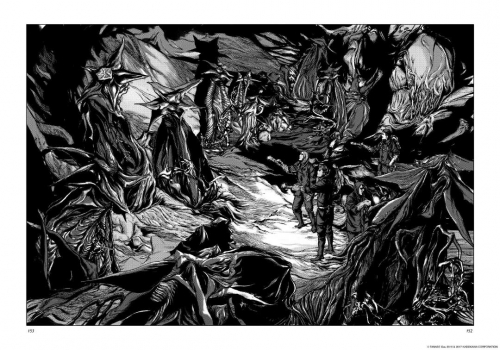

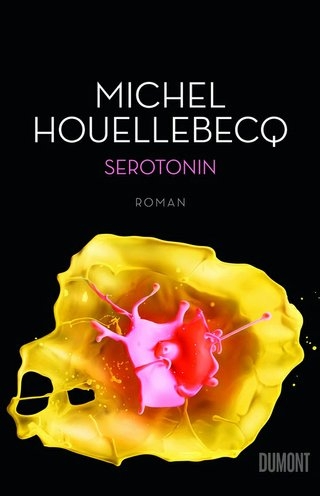 Yes, Elementarteilchen was an immediate sensation and a huge bestseller.
Yes, Elementarteilchen was an immediate sensation and a huge bestseller. 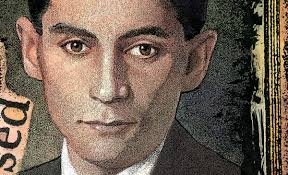
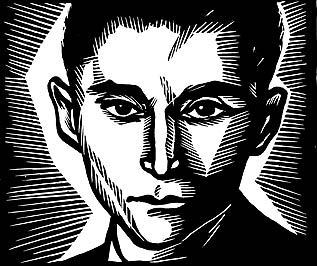 Brod’s memoirs spoke about Kafka’s gentle serenity, describing their relationship almost as if they were lovers. He also recalled the mystical experience of both men reading Plato’s Protagoras in Greek, and Flaubert’s Sentimental Education in French, like a collision of souls.
Brod’s memoirs spoke about Kafka’s gentle serenity, describing their relationship almost as if they were lovers. He also recalled the mystical experience of both men reading Plato’s Protagoras in Greek, and Flaubert’s Sentimental Education in French, like a collision of souls.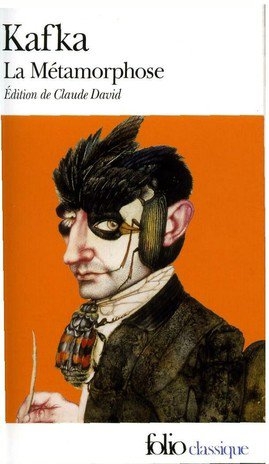 In 1916 Brod even wrote to the Austrian philosopher Martin Buber, explaining how frustrating it was to watch his best friend’s lack of enthusiasm for his own creative process: “If you only knew his substantial, though unfortunately incomplete novels, which he sometimes reads to me at odd hours,” Brod wrote. “What I wouldn’t do to make him more active!”
In 1916 Brod even wrote to the Austrian philosopher Martin Buber, explaining how frustrating it was to watch his best friend’s lack of enthusiasm for his own creative process: “If you only knew his substantial, though unfortunately incomplete novels, which he sometimes reads to me at odd hours,” Brod wrote. “What I wouldn’t do to make him more active!” As the British literary academic John R. Williams puts it rather aptly in The Essential Kafka, the Czech modernist writer frequently expressed himself through aphorism and parable, in stories that represent “remoteness, hopelessness [and] the impossibility of access to sources of authority or certainty or what in German is termed Ausweglosigkeit—the impossibility of escape or release from a labyrinth of false trails and frustrated hopes.”
As the British literary academic John R. Williams puts it rather aptly in The Essential Kafka, the Czech modernist writer frequently expressed himself through aphorism and parable, in stories that represent “remoteness, hopelessness [and] the impossibility of access to sources of authority or certainty or what in German is termed Ausweglosigkeit—the impossibility of escape or release from a labyrinth of false trails and frustrated hopes.”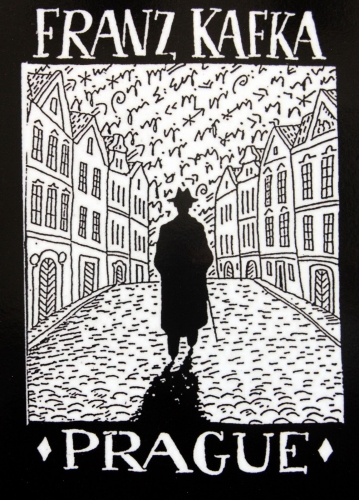 The literary biography covers a wide range of topics, including an in-depth analysis of Kafka and Brod’s complex relationship. It also dissects Kafka’s rather indifferent notion towards identity and rootedness which, in turn, leads to a conversation about his Jewishness. All of this is good foundational reading for understanding the book’s central focal point, which involves a complicated legal battle in Israel that has dragged on since the mid-1970s relating to Kafka’s literary estate.
The literary biography covers a wide range of topics, including an in-depth analysis of Kafka and Brod’s complex relationship. It also dissects Kafka’s rather indifferent notion towards identity and rootedness which, in turn, leads to a conversation about his Jewishness. All of this is good foundational reading for understanding the book’s central focal point, which involves a complicated legal battle in Israel that has dragged on since the mid-1970s relating to Kafka’s literary estate.

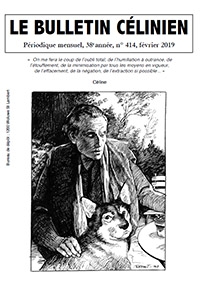 Tout a été dit sur l’indigeste pavé du tandem Taguieff-Duraffour paru au début de l’année passée ¹. En attendant la version en collection de poche, agrémentée d’une préface sur la réception critique (!), on peut maintenant y revenir avec quelque recul même si d’aucuns penseront qu’on lui accorde trop d’importance.
Tout a été dit sur l’indigeste pavé du tandem Taguieff-Duraffour paru au début de l’année passée ¹. En attendant la version en collection de poche, agrémentée d’une préface sur la réception critique (!), on peut maintenant y revenir avec quelque recul même si d’aucuns penseront qu’on lui accorde trop d’importance.
Vor gut 80 Jahren begann Ernst Jünger sein Tagebuch zum Zweiten Weltkrieg.
Sein Kriegstagebuch über den Ersten Weltkrieg, In Stahlgewittern, ist zumindest vom Titel und groben Inhalt her sehr vielen bekannt. Dieses Erstlingswerk ist bis heute ohne Frage eines der erschütterndsten Zeugnisse über den Frontalltag des Grabenkrieges, welchen Jünger vier Jahre lang erlebte. Weitaus unbeachteter blieben hingegen seine Notizen über den Zweiten Weltkrieg, die Strahlungen.
Davon abgesehen, erschien die Erstausgabe bereits 1949 mit einer Auflage von 20.000 Exemplaren und zählt für viele Jünger-Kenner mit zum Besten, was der Literat je zu Papier brachte. Die geringere Bekanntheit mag heute dadurch zu erklären sein, daß Jünger während des Zweiten Weltkrieges hauptsächlich in der Verwaltung tätig war, und nicht an der Front kämpfte, was bei einigen potentiellen Lesern sicherlich die „Action“ vermissen lässt. Ganz gefahrlos waren jedoch auch für Jünger die Jahre 1939 bis 1945 nicht.
Die von April 1939 bis Dezember 1948 reichenden Strahlungen, welche – je nach Auflage – über 1.000 Seiten umfassen, setzen zunächst mit dem Buch Gärten und Straßen an. In diesem schildert Jünger seine Erlebnisse aus dem Frankreichfeldzug, an welchem er als Hauptmann teilnahm. Prägten während des Ersten Weltkrieges buchstäbliche „Stahlgewitter“ seinen Kriegsalltag, bekam der Hauptmann der Infanterie nun nur noch „Gärten und Straßen“ zu sehen. Der Feldzug im Mai und Juni 1940 war bereits zu Ende, noch bevor seine stets zu Fuß vorwärts marschierende Truppe in das Kriegsgeschehen eingreifen konnte.
Die Jahre an der Seine
Dieser bereits 1942 veröffentlichte erste Teil ist dabei deutlich zurückhaltender geschrieben als der nach dem Krieg veröffentlichte Rest seines Tagebuches, was man insbesondere an den politischen Beurteilungen der Zeit erkennt. Den ergiebigeren Kern bilden daher die beiden aus den Jahren 1941-44 geschriebenen „Pariser Tagebücher“, die im besetzten Paris vom Leben in der Etappe erzählen.
Hier unterhielt Jünger auch Beziehungen zu unterschiedlichen Größen der Zeit, wie Pablo Picasso, Louise Ferdinand Céline und auch Carl Schmitt, der ihn in Paris besuchen kam. Aber auch zu den in Paris aktiv arbeitenden Verschwörern des 20. Juli, wie Speidel, Stülpnagel und Hofacker, unterhielt Jünger regen Kontakt.
Im Gegensatz zu den drei genannten blieb Jüngers Mitwisserschaft am Umsturzversuch jedoch unentdeckt. Seinen Beitrag am Widerstand lieferte er in Form der 1942 verfassten Friedensschrift, die nach dem Krieg gesondert veröffentlicht wurde. Eine noch spätere Veröffentlichung fand gar seine Schrift Zur Geiselfrage, in welcher er die Umstände der aus Berlin befohlenen Hinrichtungen inhaftierter Franzosen schildert, die 1941 als Racheakt durchgeführt werden mussten. Auf Grundlage dieser Schrift spielt zudem der 2011 erschienene Film vom Volker Schlöndorff Das Meer am Morgen.
Die innere Freiheit bewahren
Diese und viele weitere Themen sind es, welche gerade die beiden Pariser Tagebücher als den wertvollsten Teil der Strahlungen erscheinen lassen. Die öffentliche Beschäftigung mit ihnen beschränkt sich jedoch für gewöhnlich leider recht oberflächlich auf die immer gleichen Aspekte. So auf seine verschiedenen Liaisons in Paris oder auf seinen angeblich rein elitären Blick, der ihn das Leid um sich herum vergessen ließ.
Paris, 14. März 1943
Wenn alle Gebäude zerstört sein werden, bleibt doch die Sprache bestehen, als Zauberschloß mit Türmen und Zinnen und mit uralten Gewölben und Gängen, die niemand je erforschen wird. Dort, in den Schächten, Oublietten und Bergwerken, wird man noch weilen können und dieser Welt verlorengehen.
Derlei Sentenzen bilden den eigentlichen Gewinn seiner Schriften. Sie sind zeitlich ungebunden. „Das Ordnen der Geschehnisse als Akt der Selbstbehauptung“, wie es in einem Vorwort des Verlages heißt.
„Wenn ein Pulverturm in die Luft fliegt, überschätzt man die Bedeutung der Streichhölzer.“
Nach dem Rückzug aus Paris vor den Invasionstruppen der Alliierten wird Jünger schließlich aus der Wehrmacht entlassen und kehrt zurück in das niedersächsische Kirchhorst, wo er das Kriegsende erlebt. Festgehalten wird diese Zeit in den beiden letzten Büchern Kirchhorster Blätter und Die Hütte im Weinberg (Jahre der Okkupation). Wie bereits 1940 in Frankreich, beschreibt Jünger den Einbruch einer gewaltigen Übermacht in eine bereits besiegte Region.
Kirchhorst, 11. April 1945
Von einer solchen Niederlage erholt man sich nicht wieder wie einst nach Jena oder nach Sedan. Sie deutet eine Wende im Leben der Völker an, und nicht nur zahllose Menschen müssen sterben, sondern auch vieles, was uns im Innersten bewegte, geht unter bei diesem Übergang. Man kann das Notwendige sehen, begreifen, wollen und sogar lieben und doch zugleich von ungeheurem Schmerz durchdrungen sein.
Nun braucht es keinen Weltkrieg, um zu vielen Einsichten zu gelangen, die Jünger in seinem Tagebuch niederschrieb. Diese Erkenntnis schließt denn auch wiederum den Bogen zu uns heutigen Lesern, die gerade in dieser Schrift Jüngers weitaus mehr finden als nur zeitbezogene Singularitäten. „Hinsichtlich der Wahrnehmung der historischen Realitäten bin ich vorgeschaltet – das heißt, ich nehme sie etwas eher, etwas vor ihrem Erscheinen wahr. Für meine praktische Existenz ist das nicht günstig, da es mich zu den jeweils waltenden Mächten in Widerspruch bringt.“